OEMS: BOMBARDIER MAKES THE MOVE TO NEW DIGS
FAA: MEET THE TEAM AT THE MIKE MONRONEY CENTER
ROTORCRAFT: GOVERNMENT CRACKS DOWN ON AIR TOURS

OEMS: BOMBARDIER MAKES THE MOVE TO NEW DIGS
FAA: MEET THE TEAM AT THE MIKE MONRONEY CENTER
ROTORCRAFT: GOVERNMENT CRACKS DOWN ON AIR TOURS
Runways with steep approaches may seem benign but there's a reason extra training is required




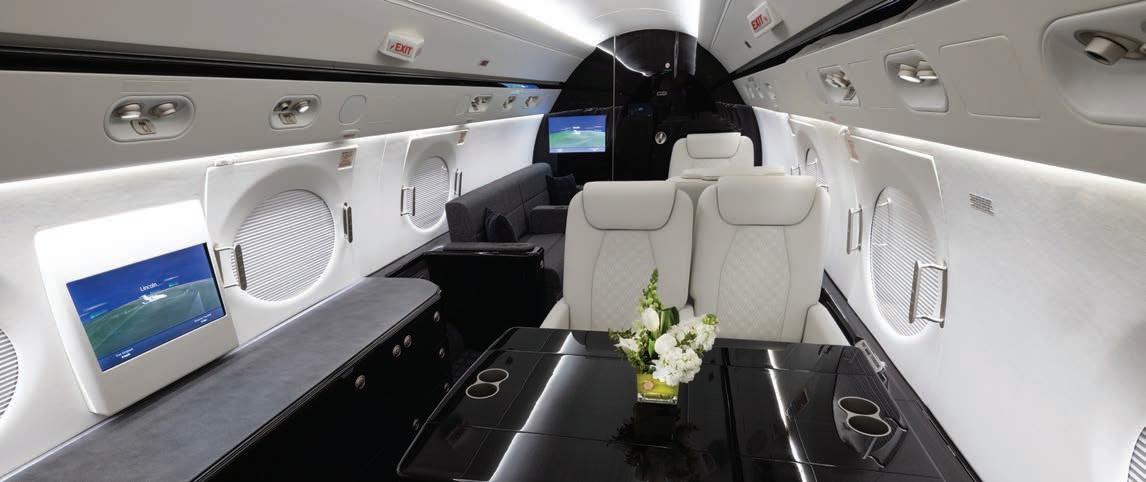
14 Special Report: How the completions industry hopes to shake things up
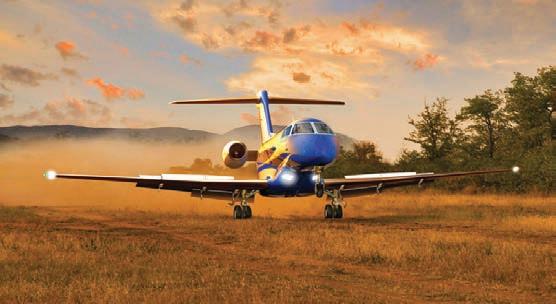

4 FAA issues SMS rules for Part 135 and air-tour operators
6 Gulfstream delivers first G700s to customers
8 Nebraska airport raked by destructive tornado 10 Airbus celebrates first flight of Racer compound helicopter
Special ops for special airfields
Bombardier’s next chapter at Pearson
Oklahoma City: The national airspace system’s ‘treasure’
ACSF safety symposium highlights risks and opportunities
Hope floats with Samaritan seaplanes


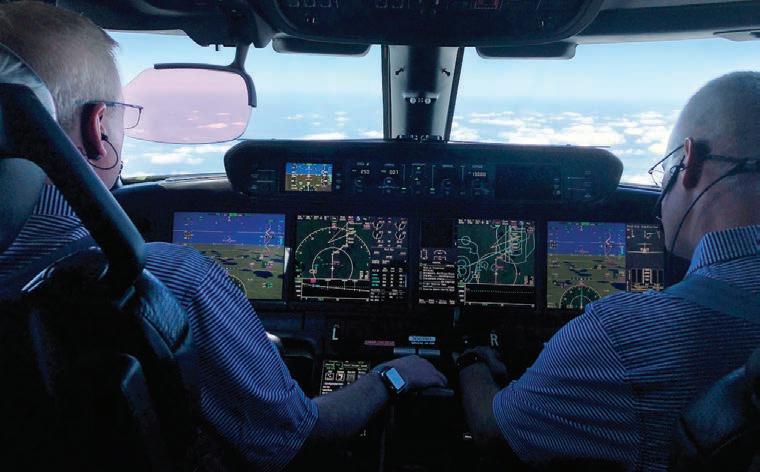
Under the FAA’s new safety management system regulations, Part 135 operators, Part 21 manufacturers, and air-tour operators have new deadlines for SMS implementation.
Certain aircraft manufacturers and Part 135 on-demand charter and commuter operators will need to implement a safety management system (SMS) in the coming years, according to much-anticipated FAA final rules expanding FAR Part 5 requirements. Depending on the operation type, the rules require those affected to have an SMS implemented in one to three years. However, less restrictive provisions apply to single-pilot organizations.
According to the agency, the rules currently cover approximately 1,848 Part 135 operators, 694 air tour operators, and 65 Part 21 design or production certificate holders (15 of which are already implementing SMS under the FAA’s voluntary program). Additionally, there are 715 letters of authorization (LOA) for Part 91 holders approved to conduct air tours that are required to implement an SMS—362 of these LOA holders have only one aircraft.
“Requiring more aviation organizations to implement a proactive approach to managing safety will prevent accidents and save lives,” said FAA Administrator Mike Whitaker. He noted that the rules also require those who have an SMS to share hazard information with other aviation organizations “so they can work collaboratively to identify and address potential safety issues.”
U.S. airlines have been required since 2018 to have an SMS to help identify, monitor, and address potential operational hazards before they become serious problems. The expansion of SMS to other operators and aircraft manufacturers is intended to address a 2020 congressional mandate and recommendations from the NTSB and two Aviation Rulemaking Committees (ARCs). Additionally, the rules more closely align the U.S. with ICAO Annex 19 “Safety Management.”
Textron Aviation has begun FAA certification flight testing with its Beechcraft Denali. The turboprop single is expected to enter service in 2025 following delays in the certification of GE Aviation’s Catalyst engine, which will power the turboprop, as well as the recent addition of Garmin Autoland as standard equipment. Textron Aviation has three prototypes flying with more than 830 flights, accumulating nearly 2,000 hours, said Lannie O’Bannion, senior v-p of global sales and flight operations. The Denali was designed to have a 1,600-nm range, 285-knot maximum cruise speed, and a 1,100-pound full fuel payload.
Embraer’s Executive Aviation division was a strong contributor to growing first-quarter revenues, the company announced. The $897 million in revenues for the first three months of 2024 represented a 25% year-over-year increase, with business jet deliveries standing out as the best rate for the past eight years. During the quarter, the company delivered 18 executive aircraft and seven airliners, representing an increase of 67% over the same period last year.
Bombardier confirmed that an order announced in December from an undisclosed customer for a dozen Challenger 3500s, valued at $326.4 million, was in fact from fractional-share provider NetJets and included 232 Challenger 3500 options that could push the value of the deal up to $6 billion, based on list prices. Deliveries on that order are set to begin next year. The airframer also reafrmed that it has a “clear line of sight” to meeting its 2025 objectives of 150 deliveries and $9 billion in revenues.
t or 60+ opratrs fo th trus yo plac in CFM –
in or popl and in or proucts – eery singl day.
We have an amazing hitry tgthr; a lot ha hapend
in th pat 50 years. Our promie t yo fo th nxt
50 i that CFM wil aways deliver th l vel o supot
and inoation that ha earnd that trus.






Gäel Méhus
CEO – CFM Intrnationa





Gulfstream Aerospace delivered the first two $75 million G700s to customers in April. The first went to launch customer Qatar Executive, and the first U.S. delivery was to Burbank, California-based chartermanagement company Avjet.
The 7,750-nm flagship of the Gulfstream lineup aircraft received FAA approval on March 29, followed by production certification and cabin interior approval on April 8.
“Beginning G700 customer deliveries less than one month after achieving FAA type certification marks an incredible milestone in Gulfstream’s history of raising the bar for the business aviation industry,” said Gulfstream president Mark Burns. “We look forward to continuing these deliveries in the weeks ahead.”
Gulfstream had hoped for certification by the end of last year and anticipated delivering as many as 15 before 2023 ended, but the prolonged approval process shifted those deliveries into this year. As a result, Gulfstream anticipates a 44 percent bump in deliveries this year to 160 jets, including 50 to 52 G700s and fewer G280s due to the conflict in Gaza (G280s are manufactured for Gulfstream by IAI in Tel Aviv).
Meanwhile, FlightSafety International has two level-D simulators and three flight training devices for the G700 online at its Savannah training center, with two more G700 simulators under construction. EASA and UK CAA conducted their final evaluations of these devices in recent weeks, and G700 pilot training started on March 21, according to FlightSafety. z
Bell Textron unveiled its 429-based Aircraft Laboratory for Future Autonomy (ALFA) helicopter equipped with fly-by-wire flight controls and capable of autonomous flight. The ALFA 429 was developed by Bell’s advanced programs team, and its fly-by-wire flight controls are separate from the helicopter’s aircraft safety system. This allows “for rapid development and evaluation of novel flight control technology without compromising overall safety,” Bell said.
The FAA updated its guidance to expand the list of antidepressant drugs that pilots and air trafc controllers can take and maintain their medical certificates. Efective April 24, the FAA’s list of “conditionally acceptable” antidepressants for special medical issuance authorization includes desvenlafaxine (Pristiq), duloxetine (Cymbalta), and venlafaxine (Efexor). These three drugs are classified as serotonin and norepinephrine reuptake inhibitors. Until last year, the list of FAA-approved antidepressant medications was limited to the selective serotonin reuptake inhibitors class.
Textron Aviation’s first-quarter aircraft delivery performance painted a mixed picture, with steady jet shipments but declining turboprops. The Wichita manufacturer handed over 36 Citations, one more than in first quarter 2023. These included four M2 Gen2s, six CJ3+s, six CJ4 Gen2s, and five Longitudes. The big year-over-year change was a shift in more Latitude deliveries (from seven to 13) and fewer XLS+s (from five to two). Turboprop deliveries, however, decreased to 20 versus 34 shipments last year.

Aircraft owners and operators at Eppley Airfield (KOMA) in Omaha, Nebraska, had to sift through the rubble after a tornado on the afternoon of April 26 destroyed four hangars containing 32 general aviation aircraft, including a Cirrus Vision Jet. No injuries were reported and the airport’s basic infrastructure—including its passenger terminal— was unscathed. It reopened within an hour.
Aircraft management and private lift provider Jet Linx suffered damage to its new complex. Company CEO Brent Wouters told AIN that while its south hangar saw only minor damage to its metal siding, the other 30,000-sq-ft hangar took a direct hit that stitched an opening in the roof, sheared bolts and welds, and twisted steel beams, rendering it unsafe for occupation.
Wouters added that it is undetermined if the hangar can be repaired or
will require replacement. Five business aircraft in it at the time—including four Cessna Citations (one Excel, two Sovereigns, and one Latitude) and a Pilatus PC-12—su ffered minor damage and were removed from the hangar for evaluation and repair. The facility’s private terminal had its land and airside doors blown out but, aside from that, su ff ered little other damage, and Jet Linx hoped to have it restored within days.
Of the two FBOs on the field, Atlantic Aviation and Signature Aviation each had minor to moderate damage to a hangar but reported minimal impact on their operations. According to an airport spokesperson, access to the GA area on the field was temporarily restricted to customers and employees of the affected operators to permit recovery and clean-up operations. z

CO2 emissions of turbine business aircraft departing from U.S. airports are down 62 percent from 2005, meaning the industry appears to have already achieved its long-term goal of halving emissions by 2050 relative to 2005 levels—at least in the U.S. According to data from the Environmental Protection Agency’s latest annual inventory of greenhouse gas emissions, carbon emissions from U.S. business jets and turboprops fell 38 percent from 2019 to 2022, while business aircraft utilization climbed 22.6 percent.
Gulfstream deliveries edged up slightly in the first quarter but did not nearly double from a year ago as planned, since FAA certification came too late to start handing over G700s before April. The Savannah, Georgia manufacturer shipped 24 jets (21 large-cabins and three super-midsize G280s) in the quarter, up from 21 (17 large-cabins and four G280s) in the first three months of 2023. Gulfstream had planned to deliver 15 to 17 G700s in the first quarter but will still meet its target of handing over 50 to 52 by year-end.
Canada’s 10% luxury tax on certain aircraft remained unchanged, despite a second recommendation from Canada’s House of Commons Standing Committee on Finance that the country’s new budget proposal “exclude aircraft from the luxury items tax act and place a moratorium on the luxury tax on aircraft pending further industry consultation.” After the tax took efect in September 2022, the government incorporated a concession to business aviation by adding the use of aircraft for business to the list of “qualifying flights” that are exempt from the tax.

Garmin is proud to now offer an industry-leading all-Garmin retrofit solution for the CJ2. Adding incredible new capabilities such as auto mode radar with the GWX™ 8000 weather radar and VNAV capabilities with the GFC™ 600 autopilot and GTN Xi navigators, you’ll drastically reduce pilot workload and increase the lifespan of your aircraft.
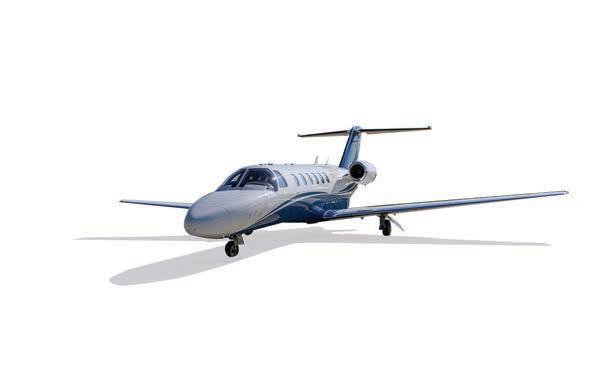

The compound-rotor Airbus Racer helicopter features an eco-mode where one of the two outboard propulsion systems can be switched to standby mode to save energy.
The Airbus Helicopters Racer high-speed compound helicopter made its first flight on April 25 in Marignane, France, flying for about 30 minutes and signaling the launch of a two-year test campaign.
Powered by two Safran Aneto-1X turboshaft engines, Racer is designed to fly at more than 215 knots while burning about 20% less fuel compared with current- generation helicopters. Racer is part of the European Clean Sky 2 research program and involves 40 partners in 13 countries.
The rotorcraft features a double-wing design with lateral pusher rotors on each wingtip. In cruise flight, Safran’s EcoMode hybrid-electric system allows one of the two engines to be switched to standby
mode, according to Airbus, “generating further fuel savings of up to 30%.”
Airbus validated the aerodynamic configuration of Racer with research on its X3 technology demonstrator, which combined fixed wings with lateral rotors and a main rotor system. In 2013, the demonstrator broke the helicopter speed record when it flew at 255 knots.
“With its 90 patents, Racer is the perfect example of the level of innovation that can be achieved when European partners come together,” said Airbus Helicopters CEO Bruno Even. “I look forward to watching this demonstrator pioneer high-speed capabilities and develop the eco-mode system that will contribute to reducing fuel consumption.” z
Bombardier’s revenues dipped by 12%, to $1.3 billion, as it handed over two fewer aircraft in the first quarter. But at the same time, it racked up 60% more in orders in the quarter year-over-year, helping to push up backlog by $700 million, to $14.9 billion.
Additionally, the company’s aftermarket revenues grew by 13%, to $477 million. The softened revenues also reflect a change in the delivery mix, with eight Globals and 12 Challengers shipped. This compares with 14 Globals and eight Challengers a year earlier.
The Biden Administration released guidance on the eligibility of corn- and soy-based ethanol for tax credits in the production of sustainable aviation fuel. Under U.S. Treasury Department guidelines, SAF that achieves a life-cycle carbon emissions reduction of at least 50% compared with conventional jet-A is eligible for a tax credit of $1.25 a gallon with one cent added per percentage point above that, up to $1.75 per gallon. The longawaited measure imposed some restrictions on corn and soy feedstock use, mandating that certain climate-smart agricultural practices must be incorporated to qualify.
The FAA has certified the Gulfstream G600 for steep approaches. The G600 demonstrated its steep-approach capabilities with low-speed handling and short-field landings at London City Airport in England and Lugano Airport in Switzerland. Operating the jet at London City requires a steep approach due to the field’s short runway and at Lugano due to its location in the mouth of a valley. “This certification further increases global access for the G600,” said Gulfstream president Mark Burns.

Webinar
June 26, 2024 | 12:00 - 1:00pm ET
When your aircraft is in need of a spare part or unscheduled maintenance, aircraft availability is key. Find out how investing in a global support network to achieve unmatched support, from anywhere across the globe, can help you get back in the air as soon as possible.

Presenter: James Prater
Vice President Customer
Support - Business Aviation
Rolls-Royce North America, Inc.
Sponsored by: Rolls-Royce
REGISTER TODAY

The halls at the 30th commencement of the Aero exposition at Friedrichshafen, Germany, felt charged with the advent of light aircraft seemingly poised to electrify flight. A cascade of companies—both established manufacturers, such as Diamond Aircraft and Textron eAviation, and start-ups such as H55 partnering with BRM Aero—presented two-seat solutions to the question of how to power aviation towards net-zero emissions by 2050.
So, it would be easy to presume that electric technology will be ready to carry the load by the time we run out of runway on the acceptance of fossil fuels in the marketplace. The General Aviation Manufacturers Association (GAMA) continues to add member companies to its ranks in this space, with both electric-powered VTOLs and conventional aircraft.
However, every solution I saw at Aero Friedrichshafen 2024 turns around a powertrain that remains limited in how much it can lift, how fast it can fly, and for how long. Tine Toma ž i č , director of engineering and programs for Pipistrel—an early adopter and proponent of electric flight— noted in our interview at the show that the industry is still working incrementally towards larger battery packs and charging networks in the two- to four-seat realm.
He pointed out that an airplane twice as fast as the EASA-certified and FAA-accepted Velis Electro—the 200-knot piston-engine Panthera—must be powered by a hybrid solution for the next several years. The current edition, with a standard Lycoming IO-540 powerplant, uses up to
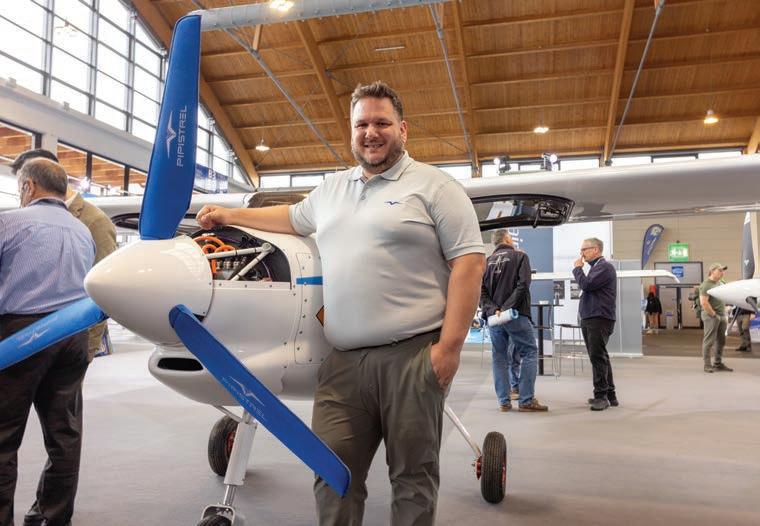
30 percent less fuel than others in the segment, and the upcoming hybrid-electric version will advance this.
“This is an aircraft that you take and you go [the] distance,” said Toma ž i č . “Speed matters, efficiency matters, and it’s just something that batteries will not be able to pull off in quite a while. The other point [as to] why we think hybrid is more appropriate for Panthera is not being dependent on the infrastructure.”
With an all-electric aircraft, you need a charger wherever you land. “It has to be able to recharge itself, and it has to have long legs. And these are the intrinsic characteristics that you have in hybrid power trains.”
As we look to even larger, faster aircraft commonly used by business aviation, we
can watch the progress of the Daher/Safran/ Airbus EcoPulse—a 300-plus-knot airplane on a TBM frame—and witness how a hybrid solution is the only reasonable answer until problems with high energy power packs and electrical distribution are solved.
Nicolas Chabbert, senior vice-president of Daher’s aircraft division, updated on the company’s efforts during a GAMAhosted panel reporting out on the association’s recently published white paper, “Recommendations for the Development of the Electric Aviation Sector in Europe,” at Aero.
“If we just take one idea, it’s not going to be a product—either it is going to be a combination of some technology breakthrough [or] some change of lines where we…evolve,” said Chabbert.
Making it marketable is key, and that blends range and speed with a safe, reliable powertrain.
We need jet-A to run our turboprops and turbine engines to support this development process—for as far as we can see into the crystal ball. Avgas is becoming intensely expensive and difficult to obtain—and must be unleaded by mandate much sooner than 2030 in Europe, as opposed to what’s projected in the U.S. Therefore, the low- or no-emissions alternative to jet-A—sustainable aviation fuel (SAF)—remains the critical bridge, particularly for turbine-powered business aviation in the near- and mid-term.
Kyle Martin, vice president of European Affairs for GAMA, called attention to recent legislation passed that draws the problem to a head in terms of the availability of SAF.
“We face some challenges getting access to that fuel,” said Martin. “Europe has passed the Refuel EU Aviation Regulation, which mandates SAF at large airports. That’s all fine for the airlines. But roughly 2,000 airfields are used daily by business aviation.”
Commercial aviation has commanded the bulk of the fuel available on the continent to even come close to making its milestones of SAF implementation, squeezing out the supply from both charter and private operators.
With the centralized sourcing and uptake in volume, prices could foreseeably come down closer to U.S. levels from the current going rates for SAF in Europe— between 300% and 600% higher than standard jet-A, according to operators at Aero Friedrichshafen.
To ease the strain on the system the European Commission can adopt a bookand-claim model similar to that used in the U.S. Book-and-claim allows an operator to receive credit for—and pay the higher price for—SAF (roughly twice as much as regular jet-A in the U.S.) dispensed at another airport, and allows a user there to pick up the fuel for the price of carbon-based jet-A.
But the political will to make this happen is failing to materialize. According to Pete Bunce, president and CEO of GAMA, “We cannot convince the commission that this is the smartest way to go.”
And that’s the rub: getting the message across to those who can pull the levers of the importance of business aviation in the region. “GA provides our communities with numerous important services,” said Bunce, “including farming and agriculture, pilot training, emergency services such as air ambulances, police, services, and—something near and dear to me—firefighting, as well as missions such as medical transportation and cargo for emergency [disaster management].”
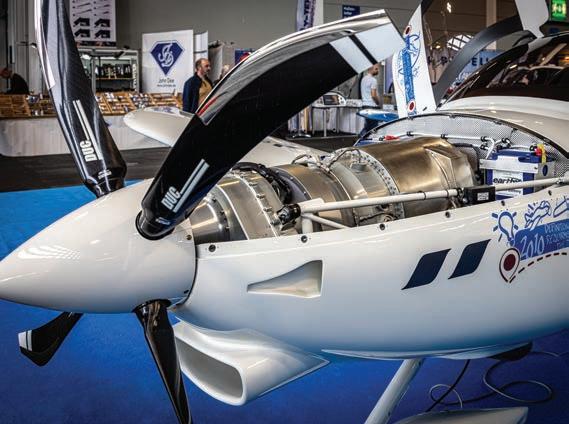

With the higher volumes and short-term solution to the distribution problem in mind—as well as the key role it plays in powering innovation—a means to support SAF’s increased availability and expansion must be found. z
The opinions expressed in this column are those of the author and not necessarily endorsed by AIN Media Group.
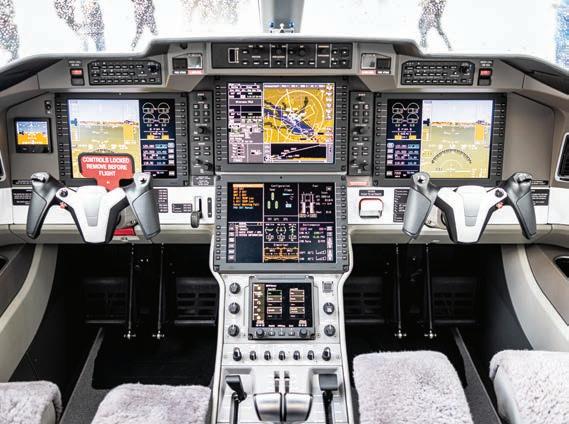


‘The buyer is a diferent person today’
The state of the completions market has changed a lot in the last few years, shaped in part by a post-pandemic consumer base whose preferences in style, design, and functionality of space have evolved with the times. Several factors are seemingly at play in this shift, with customers seeking to have more versatile compatibility in the functions of their cabin space, more streamlined and modern designs, and better connectivity using the latest technology.
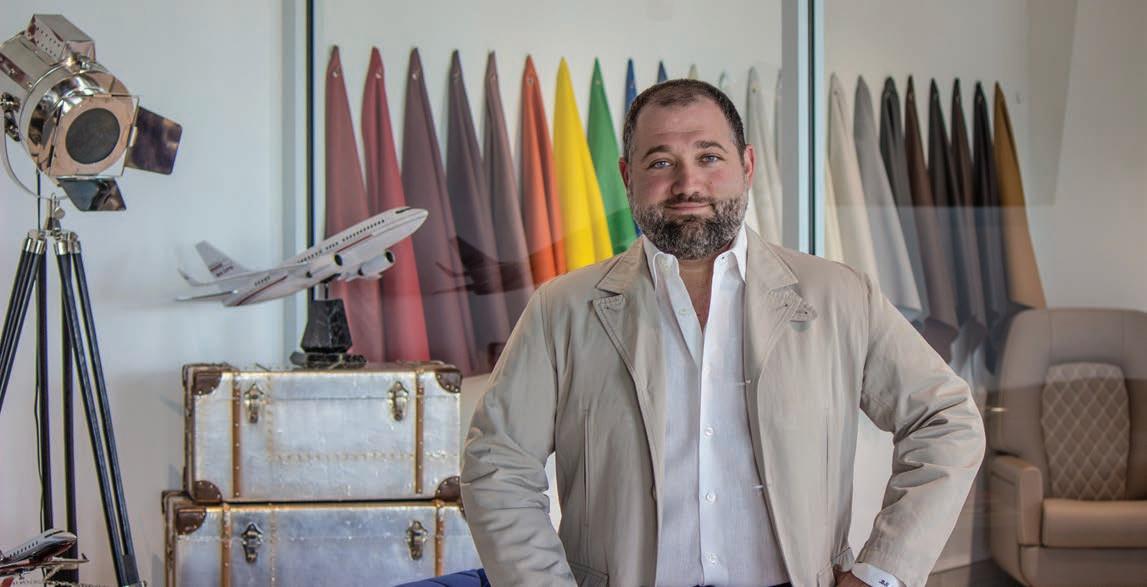
VIP Completions president Ben Shirazi told AIN that customers’ taste in design has shifted towards the minimalist “Apple store” aesthetic that is commonly seen in modern home design—a shift away from the classic “wood grain” and natural materials look that previously dominated so much of the market.
“I would say every project we’ve done for the last year, year and a half—as well as every project we have scheduled for the upcoming future—it’s all modern, you know, matte woods, open greens, kind of a ‘Zen natural’ color palette. It’s definitely that,” he said.
Veta Traxler, senior designer at West Star Aviation, has also noticed the minimalist aesthetic has taken priority among customers.
“You’re seeing a lot more monochromatic interiors, with more texture. So for example, carpets right now are going for a much more textural look, much softer, for example, to make it look more
You have a 30-yearold and a 40-year-old entrepreneur buying an aircraft as opposed to a 60- and a 70-yearold. So again, their expectations are more modern, you know?
— Ben Shirazi VIP Completions president
‘presidential.’ In the past, carpets had much more of the ‘hospitality look,’” she said.
Mary Lee of Duncan Aviation said the shift towards a “simpler” aesthetic has had an impact on design preferences in the cabin, as a whole.
“We’re getting rid of a lot of the old-fashioned kind of decorative trims and things
like that that we’ve seen. Very simple. Moving more towards a soft, neutral, natural color palette. The soft white hybrids, pulling colors from nature, natural wood tones versus some of the highly stained woods that we’ve seen before,” she said.
“Building on textures, tone on tone, monochromatic, but yet bringing visual interest with that warm, cozy, modern clean line feel,” Lee continued. “So we’re seeing a lot of white seeds with dark black accents and carpets, cooler metal tones.
Darker veneers go to that contemporary styling, kind of a white silver plating look with our more modern, cozy, natural aesthetic.”
Shirazi said the growth of those design preferences is an indication of a younger clientele stepping into the completions market.
“The buyer today is the younger generation; the younger generation has wealth earlier than they did many years ago. That’s who the target audience is today. You have a 30-year-old and a 40-yearold entrepreneur buying an aircraft as
opposed to a 60- and a 70-year-old. So again, their expectations are more modern, you know?” he added. “Back to more amenities, they’re expecting to have everything at their disposal as opposed to some limitations.”
Along with a more modern aesthetic is a desire for increased connectivity for passengers, both to the internet as a whole and a seamless integration with personal electronics brought on board.
As more people carry their own tablets, smartphones, and laptops, there has been an increase in making sure customers can integrate their tech with their cabin experience.
For some completions companies, that has meant moving away from the previous need for “modular” technology like built-in television screens and panels. Robert Stockton of Western Aircraft has seen that shift firsthand.
“We get a lot of older aircraft that have integrated TV monitors and entertainment systems that just aren’t what today’s technology is. It’s unused a lot of times, and so we get requests to remove that. That’s a difficult thing when you have a big hole in your bulkhead, so we’ve got to cover that with something, and to re-veneer the whole piece is the best way to do it. Then you end up re-engineering a large section of the whole aircraft just for that one purpose,” Stockton said.
“You have other aircraft where the TVs are integrated into the upper sidewall panels and then we remove those. You have also another hole, which is a little bit easier because you can cover that with material. But there’s a lot of work. A lot of customers say, ‘Just leave it, we just won’t use it.
“And then there’s also DVD players that aren’t being used. So those will be removed and now you have extra storage space in your cabinetry. So, that’s kind of a bonus. But a lot of it is definitely new technology,” he concluded.


Steve Elofson of Duncan Aviation has also seen that shift. “It’s less often that there’s a DVD or a Blu-Ray player that’s in the aircraft, and it’s more that the monitors that are in the aircraft are used for moving map systems such as Airshow,” he said.
With that shift away from modular technology has also come an added focus on the latest ways to ensure wireless internet connectivity. Shirazi said that Starlink, the satellite internet company spearheaded by entrepreneur Elon Musk, has growing popularity within the industry.
“Obviously, Starlink is a big word that’s used with most buyers today. Everybody wants it. Everybody’s expecting it to be available,” he said. Shirazi noted that he believes Starlink is still navigating a growing demand in the market.
“It’s taking a little longer for Starlink to get rolled out. We’ve dealt with them directly, and I feel they’re kind of more engineering-focused than they are sales-focused,” he noted, adding, “They’re focusing on the tech and the connectivity more than how they’re going to roll out their sales program. They’ve kind of picked the handful now. And this year it’s

getting put in multiple aircraft and multiple different models,” he said.
Several industry players in the aerospace industry as a whole are vocal now about taking steps towards combating carbon emissions and creating environmentally positive change, and with that comes a broader question about how sustainable materials have permeated the completions market. Lee said vendors are leading the push toward greener products.
“Our vendors are implementing a lot of products that are focused on green initiatives. Leather, for instance, we’re seeing olive-tanned leathers, so it’s 100% organic tanned leather. We’re getting away from those harsh chemicals. Fabric companies, as well, are doing a good job as far as using recycled products.
“We have a lot of opportunities with sustainable products and composite veneers, versus the standard natural veneers that we’re seeing with exotics that are getting rarer and rarer. I think our vendors are doing a really good job in providing us products that we can offer to our customers if they do get that request,” she said.
Shirazi said he’s also seen the need for sustainable resourcing come from the suppliers of the materials themselves.
“U.S. buyers are expecting suppliers to be absorbing the sustainability and factoring that into their business model. They’re picking the most expensive leather supplier and the best veneer supplier and the best carpet supplier because they’re expecting that those suppliers are hitting initiatives to support sustainability,” he said.
The sustainability of products has become a common sales feature and an indirect expectation of the buyer, he said.
“Shops that are selling products are trying to use sustainability as more of a sales feature to show, ‘Listen, we’re giving you the best product, but we’re also sustainable
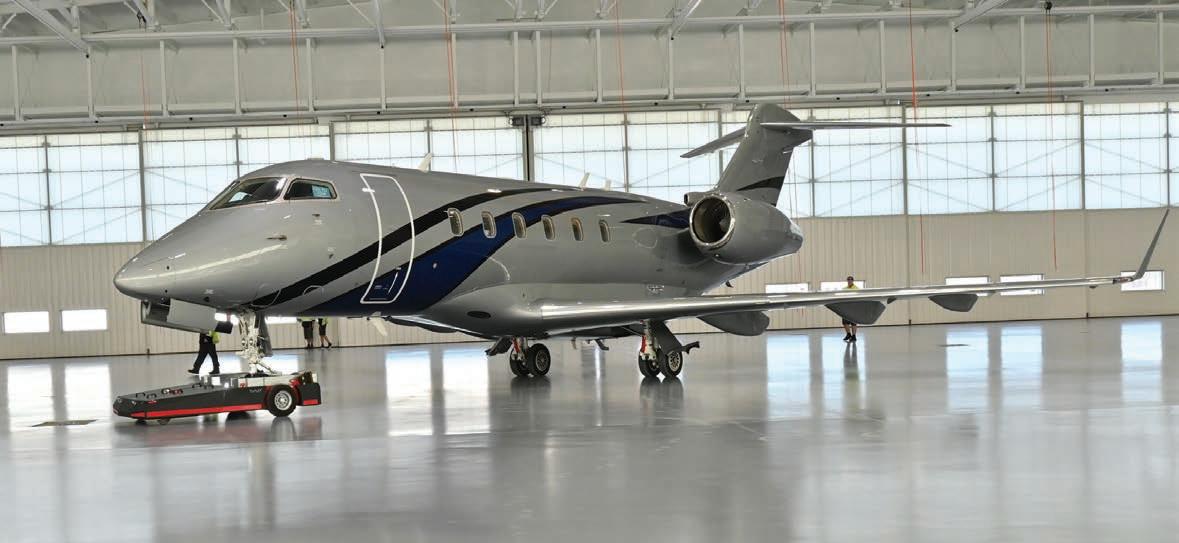
in terms of how we recycle the leather or where we source our product or materials.’ So the U.S. buyer isn’t necessarily only buying from sustainability. They’re almost expecting to buy from the best, and they have to be factoring that in their supply model,” he said.
West Star’s Traxler is a little more cautious, noting that the company has seen customers more focused on the carbon footprint of their emissions.
“I personally think it’s kind of a buzzword. A lot of people in the refurbishment market don’t really ever bring that up specifically. If they do, it’s more, ‘How can I reduce my carbon footprint.’ Can I plant more trees, for example? It’s not necessarily the materials that they’re doing inside the cabin. I would say I would get one out of 50 people who are really looking for more sustainable products, but our vendors in the aviation industry are doing a great job and being able to provide some of those activities. We recently did a Challenger where the leather actually was made out of avocados.”
Supply chain issues have affected nearly every industry in the U.S. since the onset of the pandemic, and the completions market is no di ff erent. While the market has grown and adapted to the new reality of
the international supply chain, companies still see stressors.
“I would say the biggest thing would be parts. So, we have a customer who wants a brand-new seat frame or they want to do a floor plan change where you’re going to need a new table or a new seat. Those things have extremely long lead times. You’re looking at 16 weeks to get a new table, for example,” said Traxler.
Shirazi said consolidation within the industry has also been a factor for delays.
“The major players are buying up the smaller players, and they’re pushing some of the products out of the market to push some of the more expensive and more complex products. Because of that, those products are taking longer to be designed, built, and delivered,” he said. “We definitely see consolidation causing supply chain delays, or product availability times growing. The labor cost is increasing because of inflation and the cost of living. So costs are becoming higher for a project.”
Duncan Aviation sales representative Tracey Boesch said some vendors are still recovering from the pandemic economy. “We’re seeing manufacturers there are still requiring six months or more,” she said.
Limited hangar space has also become a factor, she said. “The completion side of the business is so busy right now. Even just
more broadly, finding hangar space and getting a project in is challenging. Clients know that coupling major maintenance events with your major interior or avionics upgrades and things is a common practice just to capitalize on the downtime. With so many major meetings and events coming up and limited hangar space available, it’s becoming much more of a premium to be able to have slots.”
In a post-pandemic market, the completions industry has adapted to a shifting global economy.
“You know, the buyer is a different person today,” said Shirazi. “It’s not as much executive and corporate travel. It’s more private entrepreneur and family travel. Zoom and e-meetings have kind of changed the game as it relates to executives moving around for meetings.”
Traxler said the need for an “office in the sky” has become increasingly prevalent. “Everybody wants to be able to have the connectivity that you have on the ground, up in the air,” she said.
As the market continues to evolve for a new generation with new design choices, the completions market is navigating a changing world and a changing clientele with unique preferences from generations prior. z

Pilots can be excused for not recalling from their initial type-rating training a dedicated session on steep approaches because if they’re discussed at all, it’s typically a way to spend leftover time in the sim following the completion of a required session.
Unless they happen to be seeking approval to operate a new-to-you aircraft into a particular airport, that is, or for a company that flies into such places regularly. Perhaps that’s because pilots don’t necessarily think of these approaches— until one presents itself in the course of a trip, with conditions that compound the facts of a particular airport. But they feature in accident scenarios often enough to deserve special attention.
So, what is the training required, what approvals are necessary, and—most importantly—what do pilots need to know to fly safely in and out of these unique and challenging airports?
It’s confirmed in FAA and EASA accident and incident reports that steep approaches introduce an increased risk of a hard landing or runway undershoot owing to the high descent rate. The risk can be mitigated through pilot awareness and type-specific training. And even if pilots aren’t working for a specific operator that requires the training, they can still ask for it. Then it’s up to them to apply the techniques of a stabilized approach to these unique scenarios.
According to the International Civil Aviation Organization (ICAO), a steep approach is one having an angle of 3.5 degrees or more. The FAA defines it as one that’s more than 4.5 degrees, per Advisory Circular 120-118. That’s because those less than 4.5 degrees generally don’t trigger special operations or present a significant
amount of increased risk—and this captures most of the steep approaches to airports generally served by turbine-powered business aircraft.
However, once above 4.5 degrees, the objective hazard increases enough to trigger a requirement by most civil aviation authorities (CAAs) for specialized training and approval to operate.
An OEM must conduct an operational evaluation (OE) via a CAA to demonstrate the aircraft’s ability to perform the approach in a stabilized fashion.
According to Timothy Schoenauer, senior director of global business aviation training solutions for CAE, “Once the OE is completed, then the training provider must receive approval on courseware and curriculum, then train and qualify their instructors and examiners in order to deliver custome r training.”
Pilots need to determine next whether the customer in question is operating under Part 91, 135, or 121. And are they flying under U.S., Canadian, or European regulatory guidance—or elsewhere in the world? It turns out that it makes quite a difference.
The airport that many U.S.-based pilots call out for a steep approach is AspenPitkin County Airport (KASE). The airport features an RNAV (GPS)-F approach that possesses a final approach segment at an eye-watering 6.49-degree slope, more than twice the steepness of a typical 3-degree ILS final approach segment.
Looking at the terrain surrounding the airport and along the approach course, it makes sense.
“During recurrent I ask to do the Aspen approach after our 61.58 session is completed. It’s not required but it is something I ask for since I go into Aspen a few times a year [in the G650],” said one captain for a Part 91 client flying a Gulfstream G650 and a GIV based on the East Coast.
That’s typical of those pilots AIN surveyed—and Aspen draws attention for good reason: its lessons translate around the globe to similar fields in mountainous locales.
“We did Aspen-specific training during one of our recurrent sessions,” said Tom Reed, captain for a Dassault Falcon 2000LX flown under Part 91. “This was not specifically the ‘Steep Approach Training’ that is an independent course offered by some groups. We performed the approaches using AFM procedures to configure the airplane for the approach so the EGPWS didn’t trigger and neither did ‘sink rate.’ As a small Part 91 operator, our SOP isn’t so specific to prescribe operations at certain airports—ours is more general to operational conditions and limitations.
“Our agreed-upon procedure for Aspen is to fully configure by the time we reach Red Table [VOR]. That is, flaps and slats are out, gear is down, and we only have full flaps to extend once the descent begins. This gives us stability and the drag we need to get down the path without using the airbrakes.
“We [also] practiced balked landings just moments before touchdown. This required more finesse and crew coordination as the terrain was very close. We had to decide whether to go right or left, how to remain clear of terrain, and how to keep the speed and configuration safe while not increasing the turn radius beyond the geographic
(granite!) boundaries of the valley. The high altitude and temperature contributed to the challenge.”
Founder of Ortega Aviation Services and designated pilot examiner Kirby Ortega has flown a wide range of turbine equipment—from Cessna Caravans to Citation Xs—around the world. He draws from that experience to train pilots on both standard stabilized approaches as well as the edge cases presented by airports such as Lugano in Italy (LSZA) or Saint Barthélemy Gustaf III Airport (TFFJ) in the Caribbean.
St. Barts, being located in a French overseas collectivity, requires a specific approval to fly in to. “You have to pick up a French instructor in St. Martin,” as Ortega recalled. But it was worth it to learn the famous approach to the 2,119-foot runway. When working with new Citation pilots out of OAS’s base at Wichita Dwight D. Eisenhower National Airport (KICT), Ortega doesn’t have to fly too far from the flatlands to find the places often requested by pilots for additional experience. He’s had several new Mustang pilots take him up on the chance to fly to Aspen, or to Telluride, Colorado (KTEX).

“Assume we’re going into Telluride on a hot day and I look at the chart, at a given weight and temperature, I still have to meet the climb gradient,” said Ortega. “I also look at maximum brake energy, if I land at a higher weight.”
That’s one of those charts that a lot of pilots don’t recall, or forget it exists after training. Because covering FAR 91.103 (b)(1), preflight action, is relatively broad—and the only requirement to cover for the check ride is the performance figures in the aircraft flight manual—Ortega said, “There is nothing else in there about climb requirements, first, second, third segment, and so on.”
So, he gives pilots the following scenario: Can you accept an IFR clearance, and adhere to the published departure procedure, such as that at Eagle, Colorado (KEGE), or Aspen, which has a serious climb gradient required?
“If it’s a great VFR day, you don’t have to accept the [departure] procedure—and the Mustang can barely make it at 8,000 pounds (maximum landing weight) and at 97 knots V2—if it’s a 500-foot ceiling, knowing you don’t have the singleengine climb gradient, will you accept the IFR clearance?”
He’ll then push the pilot in training further if they say yes: “So, we’re going to go, and the Pireps are now coming in for light to moderate rime ice on the approach, or maybe there is going to be turbulence.” What choice does the pilot make now?
It all boils down to understanding risk management in the discussion on performance. Ortega also calls out the many tools available within apps, specifically ForeFlight. It now has runway analysis with a nearly animated picture of how it looks, for one. That picture during the preflight briefing is definitely worth a thousand words.
Pilots can also reference any “Steep Approach” supplements for the platforms they fly if there is a specific set of operational guidance provided by the manufacturer—as Textron Aviation provided

for the Mustang. These are found in the back of the AFM if they exist for a particular airframe.
While the Gulfstream captain speaking to AIN often flies into the UK, the airplane isn’t approved for London City Airport (EGLC) because of the field length. The modest strip on the Thames in central London recently increased its usable length to 1,199 meters/3,934 feet in takeoff run available (TORA)/landing distance available (LDA), and its approach slope now measures 5.5 degrees (it was once a stout 7.5-degree angle). The UK CAA requires authorization to fly in—it’s the only airport in the UK with such a restriction.
This puts the airport out of the reach of many jets, particularly large jetliners.
Toncontín Field (MHTG) in Tegucigalpa, Honduras, has traditionally been reserved for a captain’s approach for Part 121 carriers, because of both the approach slope and the runway length. When we visited for a Cessna Caravan demo tour in 2006, the runway (2/20) was still only 6,112 feet long, with the approach slope to Runway 2 made significantly more hazardous by the hillside infringing upon the glidepath. Work completed in 2009 extended the runway’s total length by
984 feet, with a usable portion now of 6,631 feet.
The approach demands attention— especially for the American Airlines Boeing 757s that used to regularly land there. But as of Dec. 15, 2021, most international carriers have moved to the newly opened Comayagua International Airport (MHPR) located 43 miles from Tegucigalpa.
Tegu’s Runway 2 was once served by a VOR approach with a 3.2-degree nominal “glidepath” from the VOR—which dragged the aircraft over the roughest terrain. This was supplanted in recent years by RNP approaches (North and South versions) that allow for a curving arc along a valley to the final approach segment and a 3.5-degree approach path. The RNP approach to Runway 20 looks a bit less daunting on paper, at 3.5 degrees as well as requiring crew and equipment authorization.
Also offering up challenges to pilots: Innsbruck, Austria (LOWI). The localizer approach with DME into Runway 26 commences in earnest at 18.2 DME with the glidepath to the MDA at 3.8 degrees. Into Runway 8—essentially a localizer approach to a visual—it’s even steeper at an 8.2-degree slope.
At perhaps the pinnacle of destinations that pilots fantasize about and simulate flying into, there’s Paro, Bhutan (VQPR)—though most pilots will never
get the authorization to fly there in real life. Paro International Airport makes for an eye-opening exercise in the sim, and Reed found value in the scenario, though it wasn’t for any authorized purpose.
“Airport elevation is 7,332 feet msl. The Falcon was positioned on Runway 33, and the sim instructor set up a V1 cut. Once airborne, we turned right to follow a valley that then curved left and upward. We elected to leave slats/flaps 1 without retracting them after takeoff. The challenge comes in that the valley not only narrows but the floor ascends. This makes climbing imperative. But you’re single-engine, and the challenge is to turn around in the ascending valley and return to Runway 15 to land.
“So you hug the right edge of the valley, monitor your speed and AOA, and prepare for the turn-around. You must keep your speed low to keep the turn radius tight, but you can’t stall in the turn. It takes gentle, shallow banking and finesse on the throttle to make the turn. Then, once the turn is complete, you immediately begin configuring for landing so you don’t get too fast in the descent back down the valley. Finally, you hug the right edge of the valley at Vref to be properly positioned for the left turn to landing.”
The Citation Jet Pilots Association sought to address the issue of runway overruns—a direct result, often, of any unstabilized approach, not just those coming off of a steep descent path. To tackle this, it partnered with FlightSafety International in Wichita to utilize its sims to put CJP pilots through their paces as guinea pigs—and lead them to pledge to commit to stabilized approaches in everyday practice.
And that’s the heart of the solution for pilots when confronted by a steep approach scenario—to consistently apply the same descent planning and gates at which the aircraft must be configured and in a steady state:
The aircraft is on the correct flight path—and if the sink rate is more than
1,000 fpm because of the approach descent angle, that specific sink rate must be briefed. Only minor changes in heading and pitch are required to maintain the glide path. Airspeed should be held to Vref and no more than plus-20 knots, and no lower than Vref-minus 5 knots.
In addition, said CAE’s Schoenauer, training elements may include “deploying drag-devices like spoilers on approach with full flaps, [and determining] what that approach angle looks like from the pilot’s seat—it is quite different than a normal 3-degree glide slope…This is a factor for the landing flare and landing illusions.”
And while these are some of the important elements that need to be addressed
in specialized training curricula, the airport itself is also critical, along with weather conditions. “When you add normal weather conditions to a non-normal approach to landing, particularly after an Atlantic crossing, for example, where the crew is fatigued, it is a high-risk maneuver for pilots,” said Schoenauer.
Use of high-end visual systems makes a substantial difference. “We work with operators on new approach requests [for] real... airport modeling to assure every detail such as buildings, airport markings, and terrain [is] taken into consideration,” he said.
For pilots seeking to mitigate the risk, that realism—along with the training itself—pays off in increased confidence and safety. z
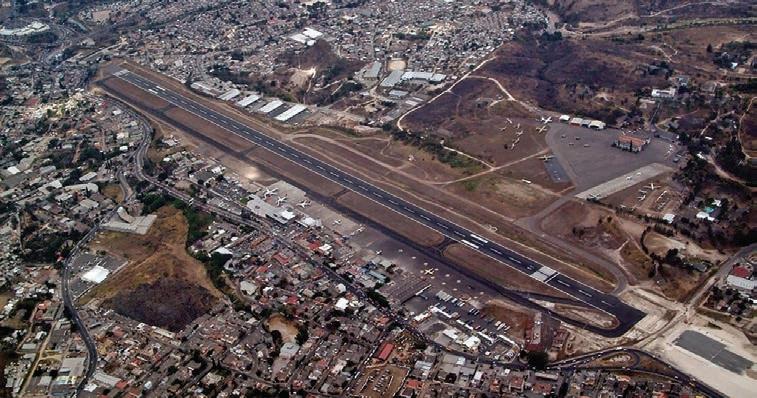
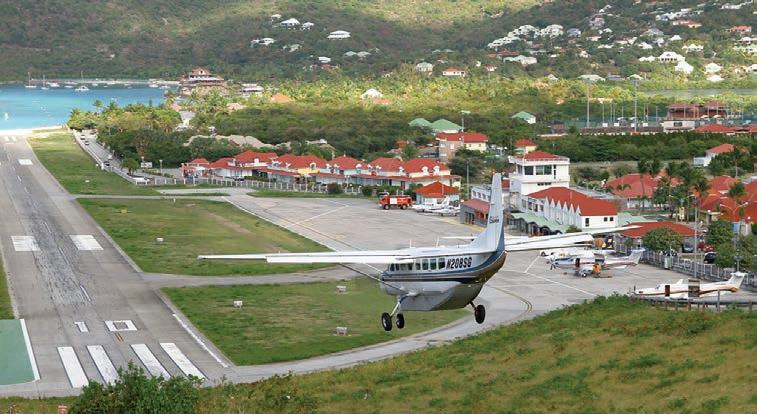
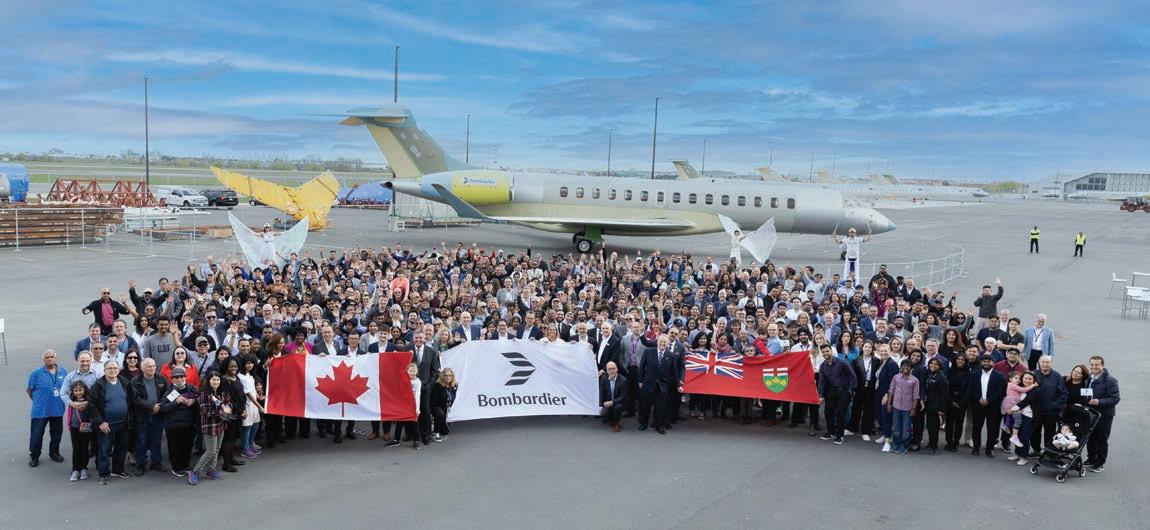
In a move emblematic of the sea change at Bombardier over the last half-dozen years, the Canadian airframer in early May inaugurated its new $500 million Global aircraft assembly center at Toronto Pearson International Airport. The celebration, which drew thousands—including the employees, their families, shareholders, and other dignitaries, marked the full transition from its production site in nearby Downsview, also in Ontario, Canada.
But it was also the latest step in an ongoing transition of the one-time conglomerate that winnowed into a pure-play business jet company, chipped away at a heavy net leverage debt ratio that just a few years ago was at 7.7 (now 3.3), and reshaped its business focus with the shuttering of the Learjet line, expansion of its services business,
and renewed focus on its traditional Global and Challenger business lines as well as on sustainable concepts such as the blended-wing EcoJet.
To the Montreal-headquartered company, the celebration of the plant was fitting as the company rolled out a new logo nicknamed the “Mach,” featuring a silhouette of an aircraft breaking the sound barrier and strokes of wind over wing to pay homage to the company’s past—and in particular, honoring its workers who have served the company.
At the dedication, Bombardier president and CEO Éric Martel noted that the logo was inspired by the supersonic flight the Global 8000 made two years ago.
“Our new brand identity celebrates our momentum and our drive for excellence. This is exactly what we’re doing here in Ontario,” Martel said.
Noting that Downsview had been part of Bombardier for more than 30 years through the acquisition of de Havilland in 1992, he added that the company produced more than 1,000 Globals at the plant that opened in 1928 to build DH Moths.

“It’s a place that transformed the aerospace industry in Canada,” he maintained. “As we inaugurate this brandnew site, we can also be proud of our heritage in Ontario, and with all the experience and talent
we brought over from Downsview, we’re going to continue making Canadian aviation history right here.”
The dedication came a little more than a month after Bombardier rolled out the final Downsview-built Global 7500. That aircraft flew away from the facility on March 23. It was a transition that was years in the making; Bombardier announced plans to move to Pearson in 2018.
The actual move, however, was a sixmonth process that involved the slow transition of tooling, stations, and people and, toward the latter part, running two lines at both locations simultaneously.
Bombardier moved specific work centers—including all of the tools and all of the associated people—in three-week cycles. The Global 5500/6500 was fully stood up first. “We had progressively emptied the Downsview facility, and progressively filled the new Pearson facility,” said
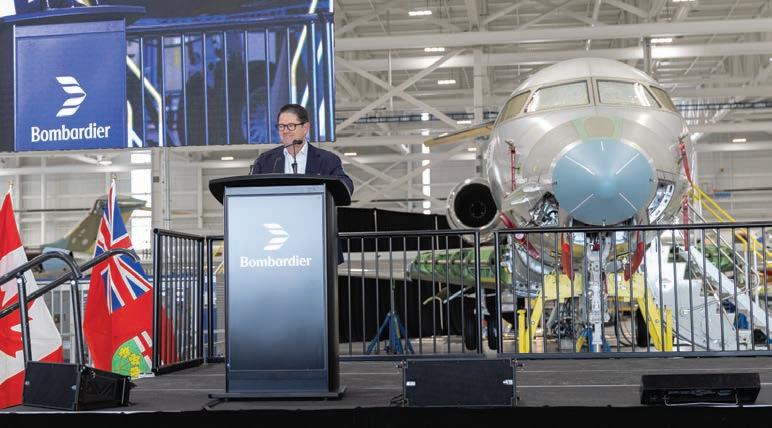
Our new brand identity celebrates our momentum and our drive for excellence. This is exactly what we’re doing here in Ontario.
— Éric Martel Bombardier president and CEO

Graham Kelly, v-p of operations for Global aircraft at the Toronto and Red Oak, Texas sites. “Now everything is here…and every element of our business is now at the Pearson facility.”
As for Downsview, Bombardier no longer owns the site, he said.
“We chose Pearson Airport because it was the closest runway to our existing facility at Downsview, and we had to make sure that our resources, our skilled workforce, was close at hand to support our new facility,” Kelly said, adding that Bombardier has moved all 2,500 workers to the new site.
The Pearson location provided the right downsizing for Bombardier’s footprint, spanning 40 acres rather than the 400-acre location at Downsview. “We only needed 40 acres, and we wanted to create a building that was state-of-the-art, but also had all of the Global family under one roof and in a single flow operation,” Kelly said.
At Downsview, production lines were spread out over multiple long linear bays. “While they were good for 90 years ago, it wasn’t creating an optimum flow for our production.”
Each Downsview bay could hold four aircraft, requiring the production flow to weave in and out of them. In the new facility, Bombardier can enclose 20 aircraft under one roof, he noted. “And, we can move the line within four hours.”
The new 770,000-sq-ft facility is an integrated facility that was designed around the aircraft. It houses two production lines flowing in a C-shape configuration, with the Global 7500 assembly looping in an outer ring and the Global 5500/6500 line in the inner ring.
The production flow comprises several positions broken into three major activities: large component handling, where key parts arrive from all around the world; aerostructures, where all the major components are joined; and then the final assembly line, where systems are integrated and tested.

Aircraft subsequently move to the “preflight” cycle in a separate hangar that can house six aircraft. There, they are tested and prepped for certification.
He described the numerous benefits of the new site and layout—notably, the e ffi ciencies. “People can work on either program here. We have similar tools and processes, so it gives us a lot more flexibility. Having both programs under one roof gives us great benefits from an operations perspective,” he said, explaining, “It enables us to move our people within the same facility onto different programs. It allows us to share best practices across the programs because we’re next door to each other. So, it’s breaking down a lot of the silos that we had back at the Downsview facility. Here, we’re working as one big team, and we’re starting to see that increased dialog and sharing of best practices within the facility.”
Kelly noted that a few employees shared with him that they had run into colleagues in the new facility that they hadn’t seen for 20 years. “It’s like working for a new company,” he was told.
The production technology is the same as at Downsview, such as the robotics used in the Global 7500 program. “What we have done, though, is optimize the line and the flow and our things such as kitting
of the parts, kitting of our hardware, and single-point tooling for each of the work centers. So, we used to tool up the person. Now, we tool up the work center.”
The Pearson center is also providing substantial environmental benefits, he added. The facility has reduced energy consumption by up to 60% and was designed with features such as underground fuel flow tanks that enable the company to recirculate the fuel and eliminate the need for fuel trucks.
It has a ground-running enclosure with a large sound barrier that significantly lowers noise, down to about 77 dB beyond the barrier, or about the sound of a noisy restaurant. This meets the environmental restrictions necessary for the surrounding community and eliminates the need to head to the runways for high-speed ground runs.
As far as the future of the facility, Kelly said the plant is already optimized for the run rates needed to scale up to the projected bump in Global production next year. But there’s room to add more if necessary, he further said. “We can optimize the shift patterns that we’re working and increase productivity out of this facility,” he said, adding that there is extra capacity in particular on the second, night, and weekend shifts.
The northeast regional forum will bring current and prospective business aircraft owners, operators, manufacturers, customers and other essential industry personnel together for a one-day event at the Westchester County Airport. This event will feature over 100 exhibits, an aircraft display, and education sessions to help introduce business aviation to local officials and prospective owners and operators, and to address any current issues in the region.
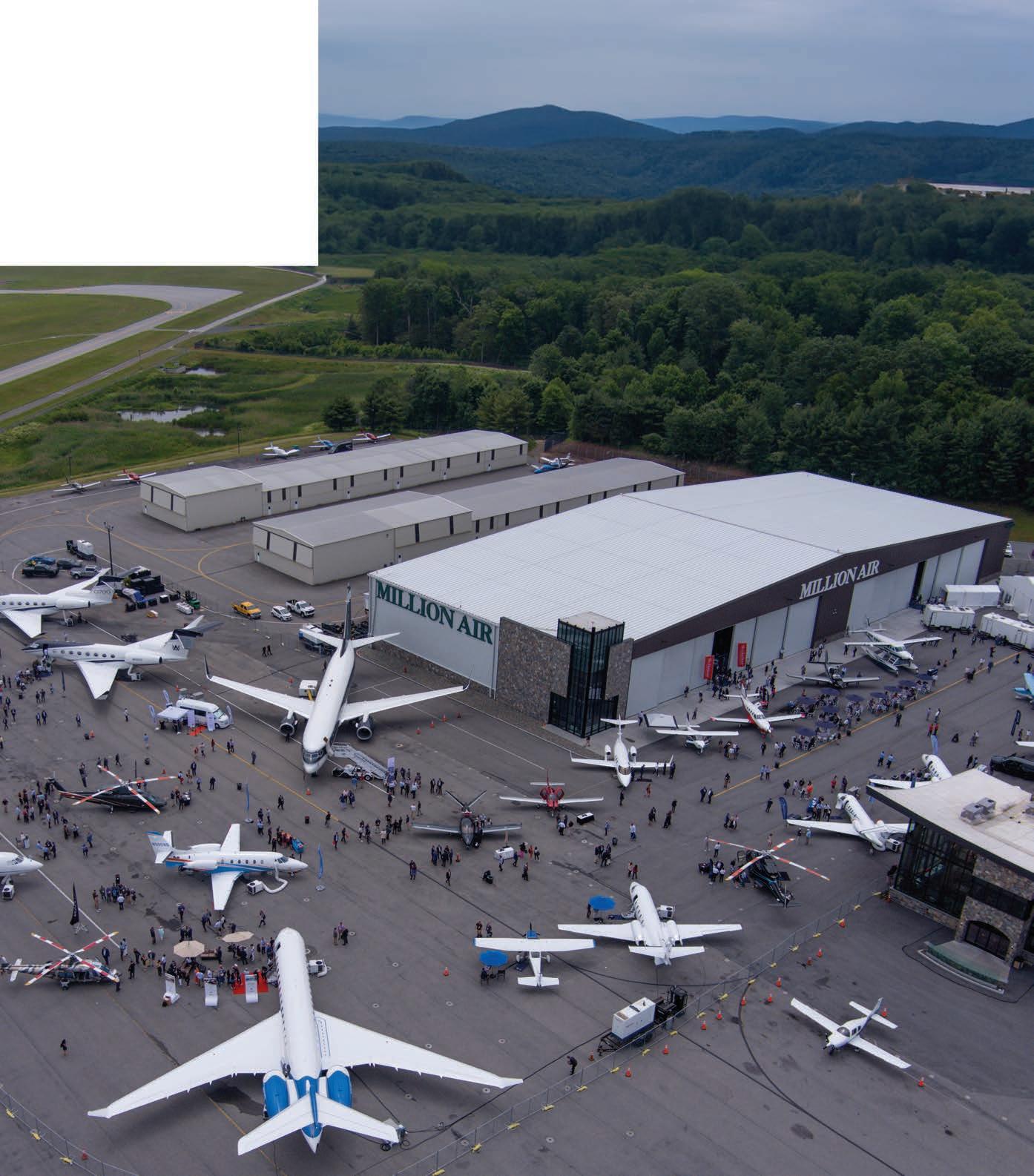

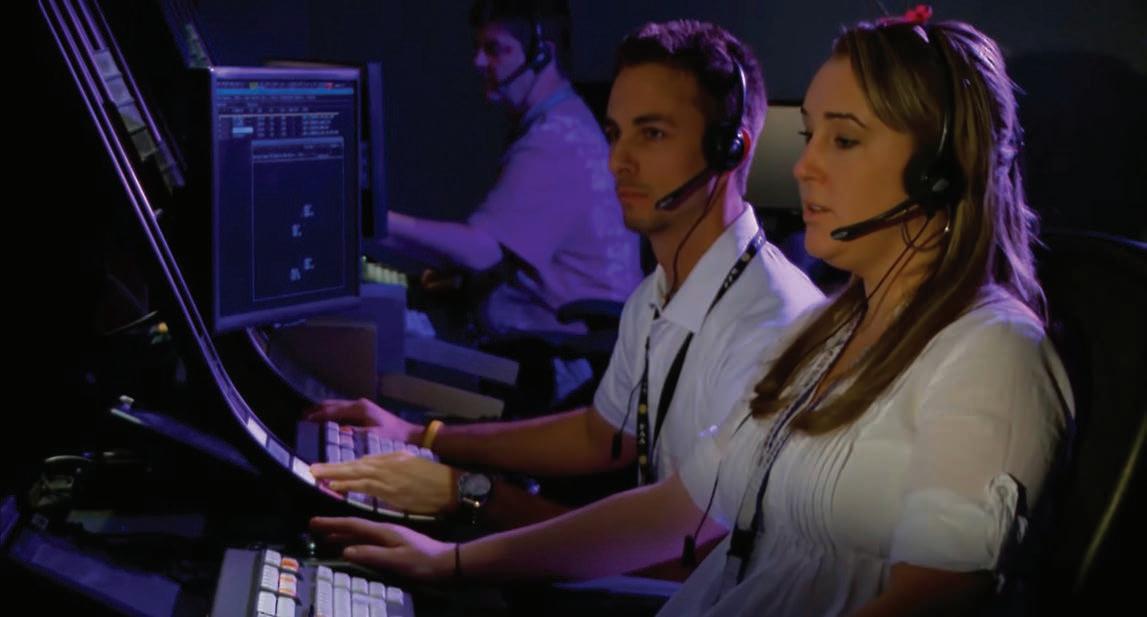
While the FAA’s headquarters in Washington, D.C., gets most of the spotlight, the agency’s sprawling Mike Monroney Aeronautical Center (MMAC) is the agency’s operations nerve center supporting a wide range of activities involving pilots and air traffic controllers, flight inspectors, aeromedical specialists, and others in the civil aviation system. Its role continues to grow with the rise of commercial space, drones, and eVTOLs.
MMAC was founded in 1946 with a few hundred employees, and today it has 6,300 federal employees. About 5,000 work onsite in a 133-building complex housed on more than 1,000 acres next to Will Rogers World Airport. It is one of the largest Department of Transportation facilities
outside of Washington, D.C., and one of the 10 largest employers in Oklahoma.
MMAC is named for Oklahoman Mike Monroney, a six-term U.S. congressman and three-term U.S. senator who headed the Senate aviation subcommittee and wrote and sponsored the bill that created the FAA. On Capitol Hill, he was known as Mr. Aviation.
If a civil aircraft flies in the national airspace, it is registered at MMAC in Oklahoma City in the Aircraft Registration Branch. If a pilot flies, he or she is licensed by the Airmen Certification Branch. If a pilot has a medical certificate from the FAA, it is managed there by the Aerospace Medical Certification Division. If a pilot is receiving educational materials on hypoxia or spatial disorientation from the FAA, it
is coming from MMAC. General aviation pilots can even take water survival training here in a specially equipped pool.
At the heart of MMAC is its academy, which is where all the FAA’s lines of business intersect, according to the agency. Everyone from air traffic control (ATC) equipment maintenance technicians to aviation inspectors, Customs and Border Patrol agents, and members of industry organizations undergoes training at the academy.
It has received considerable attention of late with the effort to ramp up air traffic controller hiring; new hires receive their basic training at the center.
Keith DeBerry, former director of the academy and now COO of the National Air Transportation Association, called the
academy “a national aerospace treasure” and noted, “ATC is always at the center of all of this, but what people don’t realize is CBP training is done there that’s not done anywhere in the world.” He pointed to training for airport officials, Part 135 operators, and other training as it strives to elevate safety. “The FAA academy is not only training the FAA workforce, it is training the industry as well,” he said.
ATC maintenance technicians learn to scale, inspect, repair, and replace radomes. Once certified for this work, they receive on-the-job training. These inspections require hands-on work to check caulking, cracking, delamination, foam density, and panel pressure. The technicians also learn how to inspect lightning rods. The FAA says this work can’t be done by drones using sensors.
DeBerry is concerned that the academy is not being used to its fullest capabilities and should have full funding.
MMAC has also been the home since 1961 for the Civil Aerospace Medical Institute (CAMI), which focuses on the human element in civil aviation for pilots, flight attendants and passengers and human factors for air traffic controllers. CAMI is staffed by researchers, doctors, other medical specialists and educators, pilots, technicians, and communicators. The organization is part of the FAA’s Office of Aerospace Medicine, which has eight divisions located in nine FAA regions.
CAMI handles pilot medical reviews and appeals, an all-important subject in the general aviation community. It also trains and evaluates medical examiners appointed under the FAA’s designated medical education program.
If a pilot wants to learn about subjects including hypoxia and spatial disorientation, the information will come from CAMI in Oklahoma. CAMI conducts water survival and hypoxia training at the center and takes some of its hypoxia training capabilities on the road. It operates an
altitude chamber at the center for training and research. CAMI’s other equipment includes a narrowbody cabin evacuation simulator, a 747 with four sections for research on different projects, a 175,000-gallon indoor water egress pool, and a sled track to test and examine deceleration while achieving a crash-like impact of 30 g in 60 microseconds.
A Piper Mailbu/Matrix fixed-base simulator includes a head-up display with synthetic vision and can be used for conventional or fly-by-wire flight control research. Among other simulators and training devices, CAMI has an ATC research simulator and an ATC training and performance laboratory. There is also a vertical flight general aviation research simulator and a Frasca very-light-jet simulator with a Garmin 1000 avionics suite. A Gyro II spatial disorientation device with a computerized imaging system offers a realistic flight simulation.
An uncrewed aircraft system (UAS) control station simulator allows for UAS research.
NASA collaborates with the FAA at MMAC for a variety of training and research. Last year, two NASA research pilots completed water survival training at the FAA pool at MMAC. The pilots sit in a generic cockpit frame on the side of the pool that then flips over backward into
the water to allow the pilot to experience escaping from a cockpit underwater.
The FAA is adding a new 43,000-sq-ft Wind and Wave Evacuation and Survival facility (WiWaves) for CAMI to replace its aging 1967 vintage Water Survival Research Facility. This will be used for training and research by the FAA, and it will also support activities for other federal, state, and local agencies including U.S. active and reserve military forces, NASA, the Oklahoma Highway Patrol, and fire departments in Oklahoma City.
The water research tank will be 17 feet deep, 100 feet long, and 80 feet wide. It is designed to produce waves 10 feet high and replicate 27-knot winds to create a realistic rough sea state. This wind speed is Force 6 on the Beaufort scale, listed as a “strong breeze” where strong tree branches move and there is whistling in the wires. Whitecaps are common. The next category up, Force 7, starts at 28 knots and is a “near gale.”
The tank’s structure and mechanical apparatus will produce these highly realistic conditions. Researchers will evaluate slides, rafts, and other safety devices in these challenging conditions as they work to perfect test criteria and develop standards for life-saving equipment.
This research is critically important as highlighted in a historic incident in 1942. A B-17 was ferrying World War 1 fighter ace Eddie Rickenbacker to Guadalcanal, where
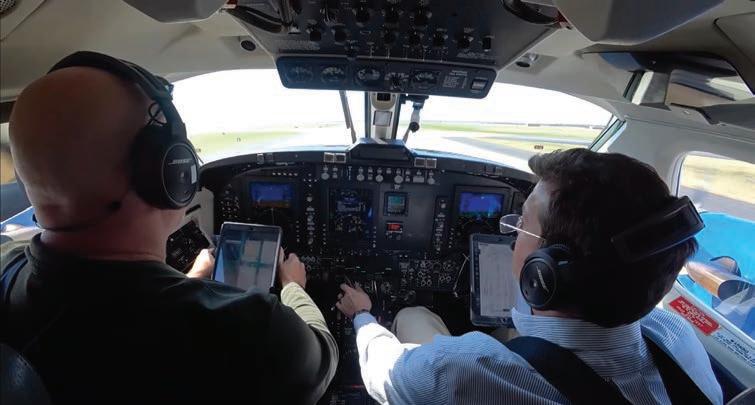
he would observe American fighter operations against the Japanese and—once back in Washington—suggest improvements. But the B-17 lost its way and ditched into the Pacific Ocean due to fuel exhaustion.
The men quickly evacuated the flooding aircraft and got into rafts. However, they found three could barely fit into a threeman raft and two barely in a two-man one. Contractors had been skimping on materials used to make the rafts, and there was little food or water aboard. Under Rickenbacker’s leadership, all but one of the crew survived 24 days at sea. The Army Air Force investigated and made many improvements to water survival gear. The FAA will use the water tank to devise continuous improvements for this type of equipment.
The tank will be big enough for an aircraft fuselage to be lifted into it for ditching evacuation training and research. There will also be a large room for classes and meetings for up to 100 people, a laboratory, and a workshop to support the activities in the tank.
Michelle Coppedge, director of MMAC, told AIN that it will ramp up research that is aimed at reducing accidents and fatalities by “testing airplane ditching, water evacuations, survival techniques, and more.”
There are other organizations based at MMAC including the FAA logistics warehouse, which has 725,000 sq ft of stateof-the-art storage space for ATC systems spare parts. It houses 63,000 stock numbers to support the NAS, including some parts no longer in production.
The FAA’s fleet of flight inspection aircraft is also operated from MMAC, and new aircraft are arriving and being retrofitted to provide more efficient flight inspection operations.
It is fitting that this new highly capable research tank and other vast aviation research capability is located at MMAC next to an airport named for Will Rogers.
Rogers loved aviation and was a leading booster of it in the 1930s. He once said, “If your time is worth anything, travel by air. If not, you might just as well walk.”

Rogers was the son of a Cherokee who started as a trick roper in vaudeville shows. He later became so prominent as a humorist commenting on America that he wrote thousands of syndicated newspaper columns, appeared on radio, and starred in 50 silent movies and 21 talkies.
Rogers knew fellow Oklahoman Wiley Post who was the first pilot to circle the globe in a few hours short of eight days in 1933. In 1935, Rogers agreed to fly with Post on another round-the-world attempt that would go by way of Alaska and Siberia and maybe circle the globe. Post was the most famous pilot next to Charles Lindbergh. He tested the limits of 1930s aircraft with high-altitude flights. He also developed pressure suits and became the first pilot to experience the jet stream.
Both Rogers and Post were self-made men and famous Americans in the 1930s. They tragically died together during a lowvisibility takeoff from a lagoon near Point Barrow, Alaska, with Post at the controls of a highly customized Lockheed Orion pontoon plane. Shortly after liftoff, the singleengine aircraft banked sharply and the engine stopped as observers on the ground heard a loud noise. The aircraft’s right wing hit the water and the plane flipped over as the wing came o ff along with the pontoons. Both men were killed on impact
in the crash on August 15, 1935. The nation mourned deeply as if the president of the U.S. had just died.
Oklahoma City also has an airport named for Wiley Post, which is a reliever for Will Rogers World Airport and is located 12 miles away. This airport, with three runways, is a center for business aviation with several FBOs operating there. More than 300 aircraft are based at Wiley Post, and the airport had 55,000 operations in 2021. Will Rogers has 72,000 operations annually and is served by dozens of airlines.
A Will Rogers-Wiley Post Fly-In is held each year on the August 15 anniversary of the day Post’s airplane crashed. It’s held on a 2,000-foot grass strip at Rogers’ birthplace near Oologah, Oklahoma, which is northeast of Tulsa. The fly-in draws dozens of vintage aircraft.
MMAC also receives many visitors, from U.S. senators, members of Congress, subcommittee staff, and FAA and DOT executives. Transportation Secretary Pete Buttigieg visited with Oklahoma Governor Kevin Stitt and Oklahoma City Mayor David Holt to learn about controller training. Buttigieg said during the visit: “Our ability to keep up after Covid and what it did to our [controller] training pipeline, which is one more example of what you do here at this facility, is a matter of national interest and even presidential concern.” z
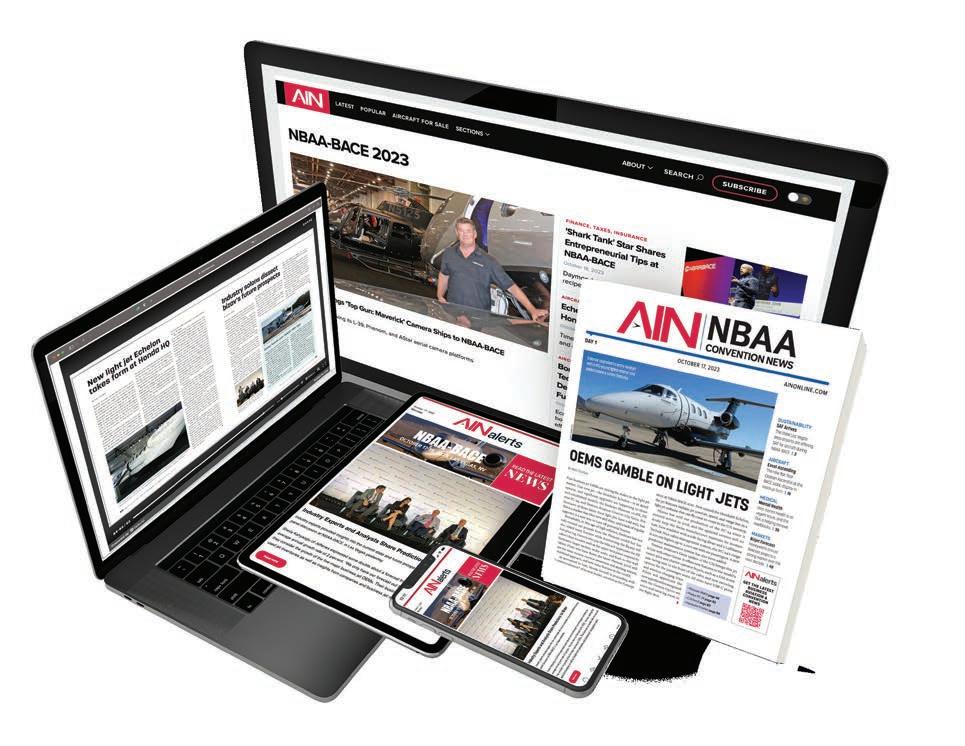
For over 50 years, AIN has provided market-leading coverage of the most important airshows and conventions across the globe. Drive awareness and consideration with a 360-degree marketing plan including print (where available), newsletters, social and digital. Custom content opportunities are also available across all of our platforms.
February: *Singapore Airshow, *Heli-EXPO | March: Schedulers & Dispatchers, AEA | April: Sun n’ Fun, AERO Friedrichshafen | May: *EBACE, Aircraf Interiors Expo | July: *Farnborough Air Show, EAA Air Venture August: LABACE | October: *NBAA-BACE | December: *MEBAA

Learn more at: marketing.ainonline.com/airshows-conventions
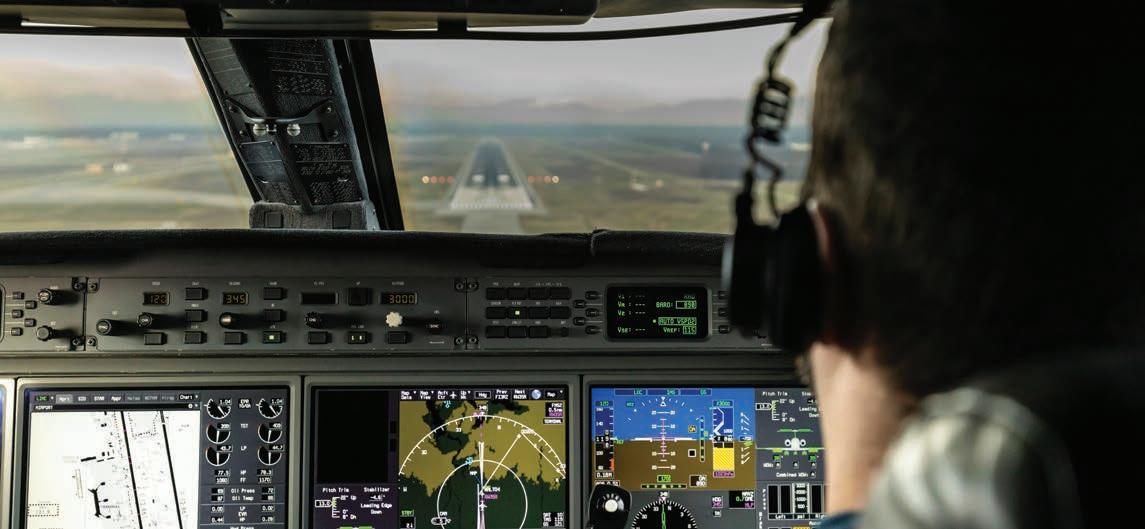
At the Air Charter Safety Foundation (ACSF) Safety Symposium held in early April, participants shared important safety information, lessons learned, and opportunities for improvement.
These lessons come at a critical time; The symposium began with an acknowledgment that the business aviation industry hasn’t gotten off to a good start in the first quarter, with three fatal business jet accidents and nine fatalities occurring in the U.S., up from two accidents and two fatalities during the same period last year.
Held at Embry-Riddle Aeronautical University, not only was the ACSF Symposium a venue to share safety ideas, but an opportunity to welcome Embry-Riddle students to participate and learn more about business aviation safety. This targeted another key industry concern—workforce.
The event began on April 1 with a panel of industry experts sharing their career experiences, and this was well-attended by Embry-Riddle students who are interested in business aviation opportunities.
Embry-Riddle students Turueno Garcia and Trevor Simoneau moderated the panel session, which featured Richard Meikle, FlightSafety International executive v-p of operations and safety; Joan Sullivan Garrett, MedAire founder and chairman; Megha Bhatia, chief science and chief marketing officer at JSSI; and Greg Johnson, COO of Tuvoli.
The panelists discussed experiences from their careers, responding to questions from Garcia and Simoneau, such as what they learned in college that they expected and didn’t expect to learn; who
they learned the most from early in their careers; the most impactful advice they received; what makes them leave fear of failure behind and try to bring their ideas into being; what they are excited about; problems they are trying to solve; and what they think about the new generations entering the aerospace industry.
“Something I learned going through college was what’s my next immediate threat,” said Meikle. “Every morning I’m looking at my calendar and saying what’s my next threat, knowing that the day’s probably going to shuffle. Obviously, academic stuff is really important as well. But the other thing I think college teaches you is how to interact with other humans. And that is something that I think we are losing a little bit as a society because you walk into the student common and you watch them and probably 80 percent are on a headset or some device.”
Bhatia emphasized sales skills as a key learning opportunity. “You may be the smartest person in the room, but if you can’t get the point across clearly, effectively, and in a way that the audience can consume, then it’s not getting across. You do not have to be in a sales job. And it may not be the core thing you want to do. But if you can do the sales job even for two hours ever in your life, do it. Their resilience, their rejection, get used to it. It’s a part of the process and knowing that, you’re going to come out on top.”
Discussing the role of mentors helping her build MedAire over the past 40 years, Garrett said, “There have always been people, women in the industry that I saw that were so successful, and I said, ‘If she can do it, I can do it.’ And so I’m going to tell you, if I can do it, you can do it. You just have to have the vision. You just have to have the dream. You just have to have the desire to do what it takes to get to where you want to be.”
Johnson credited mentors with believing in him but also highlighted his willingness as a young new entrant to aviation to take a risk and submit a business plan for an aircraft management operation, even though he had little experience in the field. “You’ve got to make those leaps,” he said. “I’m a big believer in that saying: luck is the intersection of opportunity and preparation.”
Scott Griffith, founder and managing partner of SG Collaborative Solutions, shared
two stories about events that shaped his career and led to the development of the aviation safety action programs (ASAP) that have helped make commercial aviation the safest mode of transportation.
At age 17, Griffith was logging time toward his private pilot license and took off one day for a short flight to another airport. Not realizing that a front had gone through, he ended up landing with a tailwind and, while standing on the brakes and screeching to a halt at the end of the runway, his airplane’s wingtip scraped the airport’s wind tetrahedron. “The plane spun around and I came to a stop,” he recalled.
“This old man came running out and yelled at me. ‘What are you doing? Don’t you know you can’t land with a tailwind?’ And he looked at me and he said, ‘Are you okay?’”
After Griffith assured him that he was okay, the man said, “‘Well, let me help you paint that tip of your wing, and nobody has to know about it.’ And I thought, oh my gosh, he just saved my entire career.”
Griffith could have kept this a secret, but he admitted, “I went back and told the owner of the flight school what happened. And he said, ‘Since you came forward, there will be no repercussions.’ Had I not done that, I would carry that secret with me for the rest of my life. So flash forward about 20-some-odd years. When I went into the airline industry, I created a program for pilots that come forward and

This old man came running out and yelled at me. ‘What are you doing? Don’t you know you can’t land with a tailwind?’ And he looked at me and he said, ‘Are you okay?’
— Scott Grifth
disclose not only the risks outside their cockpit but also the risks coming from themselves. And that was transformative for the airline industry.”
The other formative event was when Griffith witnessed an iconic, tragic accident, the Delta Flight 191 L-1011 crash at DFW Airport in Texas on Aug. 2, 1985, which was due to a powerful microburst downdraft.

The
business aviation panel was especially helpful for EmbryRiddle Aeronautical University students.
While doing a walkaround of the Boeing 727 he was flying, Griffith saw the L-1011 burst out of the clouds, lower than he’d ever seen such a large airplane. After hitting a building, the Tristar bounced back into the air, then crashed onto Highway 114, killing the occupant of a car and 136 passengers and crew.
As Griffith stood there with the sun shining on the tarmac, he recalled, “Everything’s just normal.” Then the wind from the microburst struck the 727, followed by a torrent of rain. Some passengers inside the 727 saw the fire, heard the sirens from the crash, and started heading for the exit, and some were panicking. After helping the passengers back into the terminal, he said, “My brain couldn’t get wrapped around what I had just seen.”
The event spurred Griffith into working on a laser-prediction system to detect microbursts and his master’s degree thesis. What struck him and still raises questions is that a well-equipped airplane piloted by a skilled crew with the best training in the world “couldn’t see…nor understand the risk environment” because the microburst essentially was invisible.
The important issue is that accidents and incidents are what he characterized as “the tip of the iceberg” that we can see sticking above the water. What organizations like ACSF are doing by creating a mechanism for members to share safety information is helping identify those invisible risks, the ones that live below the surface. “These are risks that live in your system and with your people,” he said.
SG Collaborative Solutions helps companies develop systems to mitigate these risks, by setting up a collaborative culture run by a reliability management team. “I took the words from the ACSF call to action,” he said.
Before setting up a safety management system (SMS), he recommends developing a collaborative just culture program. “Build on that with your ASAP programs or FOQA [flight operations quality assurance] programs, align everything, and then integrate

that into something called SMS.
“But we’ve introduced a term called RMS, which means reliability management system. And what is collaborative high reliability? It’s comprised of a collaborative just culture program, a reliability management team, and a reliability management system. It’s evidence-producing because no one has done it until recently. We’ve had three organizations achieve it. [The RMS] is documented, monitored, measured, aligned, and integrated, and it’s the first integrated approach to get independently audited by a third party.
“Reliable organizations involve more attributes than just safety,” he said.
“Why do we do what we do?” asked Kent Stauffer, v-p of safety at fractional-share operator Flexjet. Characterizing his presentation as “observations from an operator that has access to lots of mistakes,” he explained, “I’m going to talk about how people fit into this model, why we do what we do, and what contributes to our errors. What are we trying to accomplish? We’re trying to get to a high-reliability organization.”
“We all don’t have enough people,” he acknowledged. While pilots have been an issue, “Did you know the maintenance shortage is worse? The pilot gap is being shortened and will be solved quicker than
maintenance.” But there are also not enough people in air traffic control, at the regulators, and at companies that supply aviation, work at FBOs fueling aircraft, and teach.
The latter is critical because so many new people are starting aviation careers and “now you have a knowledge gap,” he said. Another gap is cultural, with people from different backgrounds coming together. “You still have not solved the issue yet to get to your high-reliability organization. It’s not only about people, not enough education, and what I see is not enough of the organizational structure to understand and compensate for that.”

...The pilot gap is being shortened and will be solved quicker than maintenance.
— Kent Staufer
Stauffer listed four attributes that Flexjet communicates to its people to help inculcate the company’s safety goals.
The first is to be fit for duty, and part of this means getting adequate sleep. Flexjet is developing its own fatigue management software to manage this critical issue because existing tools didn’t meet the company’s needs. “We’ve found that when our pilots call in fatigued,” Stauffer said, “a high percentage of the time it involves something that’s absolutely uncontrollable, like the fire alarm went off in the hotel. Undiagnosed sleep issues are a problem.”
Next is acknowledging your limitations. It’s okay to say, “‘I’m not okay.’ You can tell others about it. Don’t be a martyr,” he emphasized. Flexjet also teaches new-hire pilots to be willing to use tools like the go-around and saying “unable” to air traffic controllers.
“We tell them, if you need to go around, you will not be penalized. We will reward you when you do: ‘Phenomenal job, thank you very much.’” Controllers frequently give instructions that a flight crew might feel aren’t suitable but, in the spirit of being helpful, will not refuse. “The answer should be ‘No, we’re not going to do that.’ It’s okay to acknowledge this.”
Third is integrity. “Do the right thing every time. You have to define it in your organization. That means that everybody has to understand what that is.”
Being accountable is fourth on the list. Stauffer pointed out that pilots more often provide reports to Flexjet’s ASAP, so it might be necessary to encourage other groups such as mechanics to participate more. “Radically embrace a just culture. You have to define it. If we don’t define, measure, and audit, do we really have one? You’ve got to have something to define what it is you’re expecting in your just culture.”
Stauffer is well aware of human limitations and offered some tips to overcoming these. Communication is key, but “first by listening” then by using
standard terminology; “turning our brain on” instead of tuning out; not being accusatory; and avoiding emotions in written communications.
We also need to recognize other people’s strengths and understand the people we work with. Culture is key, he explained. “If you’re blaming people, you’re not learning anything. Just culture is exceptionally valuable, and the information you’re getting from it is valuable.”
Finally, we must have empathy. “You can’t fire people who make mistakes, otherwise none of us would have jobs. You can’t get to the root of it until you truly understand and care about when they make a mistake.”
In response to a question from the audience about the most outstanding learning that Flexjet has from its FOQA program, Stauffer said the company receives hundreds of reports to its ASAP per month. “It’s invaluable.” Many of the reports would never have come to light without the ASAP, and they have driven improvements such as new trip notes for specific airports. More importantly, the data from ASAP enables sharing within and outside Flexjet. “Data helps us get to where we need to go,” he said. “Sharing is important.”
Retired NTSB air safety investigator Roger Cox highlighted the risks of runway excursions and incursions, citing a number of accidents and takeaways from each that could have eliminated the risk factors that led to the accident.
“The most popular way to wreck a corporate airplane is an excursion,” he said. Pointing to what seems like an increase in the number of such accidents, he explained, “We have to look at the risk factors, and how to figure out as operators what they are and what we can do about [them].”
One important takeaway from studying these accidents: “You can make your own commit-to-stop policy. It can be in the air but written in advance so that everyone

We have to look at the risk factors, and how to figure out as operators what they are and what we can do about [them].
— Roger Cox
knows and agrees to it and everybody understands what’s going to happen. [An excursion with] low energy is better than high.”
Cox also recommends that pilots and operators take the time to study accidents without waiting for the final NTSB report, which is usually released up to two years later. “Look at the accident database for your airplane. See how many times the crew misunderstood their own braking system. If you’re not on speed in the touchdown zone, you’re asking for it.”
The second day of the ACSF Safety Symposium featured Scott and Terry Maurer, parents of Colgan Flight 3407 victim Lorin Maurer, highlighting issues facing families when accidents happen, especially given the poor business aviation record during the first quarter. Their presentation focused not just on the tragic accident that took the life of their daughter and the other 49 victims but on tools that they believe can help prevent accidents.
“This is a tough subject,” Scott Maurer said. “I want all of you to know we’ve done
this many times, we want to do it for you, and it’s also a way of us honoring those loved ones we’ve lost.”
“We’re so pleased yesterday that you started by recognizing the people who lost their lives [in the first quarter],” said Terry Maurer. “Remember them, say their names. If you can confront someone who has had a loss, they just want to talk about their loved one, so ask them.”
After detailing the painful circumstances of the accident and the initial poorly handled assistance given to the victims’ families, Scott Maurer outlined his recommendations to the symposium attendees. “If an accident were to happen, or if something bad were to happen, one of the takeaways Terry and I think would be beneficial to you, number one, be a good listener. Information is critical. If somebody says, ‘This is what I’m looking for, I would like an answer,’ you’ve got to get them the right answer…in a timely manner.
“You need to communicate with compassion. Yes, you have a business to run. I use the phrase, ‘There’s a difference between no and hell no.’ The attorney’s going to be whispering in your ear saying, ‘You shouldn’t do this, you can’t do that, no, no, no.’ When I talk to CEOs and executives, my comment to them is, ‘What would you do if it was your son or daughter, wife, cousin? Would you be wondering what your bottom line is going to be? Whether you’re going to get sued? Heck no. You’d do the right thing.

Put the families first, do not be defensive, do not impede the message, and I can’t say enough, communicate, communicate, communicate.
— Scott Maurer
“Be compassionate. Make sure you’re providing those basic needs. Terry and I didn’t know it was time to go to bed; we didn’t know it was time to eat. You’ve got to help people survive those first couple of days.
“I always like to say, empower them, let them make some decisions because that’s empowering. Allow them to get back into getting to some control.”
He concluded: “Put the families first, do not be defensive, do not impede the

message, and I can’t say enough, communicate, communicate, communicate.”
For the Maurers, whose daughter Lorin adopted the motto “It’s a beautiful day and it’s great to be alive,” Scott said, “Every day is not a beautiful day and it doesn’t always feel great to be alive. But I’m so proud to put that message out here because it meant enough to my daughter that she put it here, she put it there. And it gives you an alternative. You have a choice when you get out of bed in the morning, you can smile or you can frown. My daughter attempted to put a smile on every day and say it’s a beautiful day and it’s great to be alive and live life. And what we have found from so many people, as they share stories with us about their experiences with our daughter, is in 30 short years she led a pretty full life.
“One thing I do want to say to all of you: I want to challenge you. You had this conference for a good reason; you gathered here for a good reason. You got a lot of good tools. In two days you’re going to go back to your old world, and by next week, maybe this didn’t happen. Don’t let that be the case. Please leave this conference and take a tool and something you got from this conference and maybe next year, [the organizers] can ask them to report back, ‘What did you take away from last year that you put into your business to make it better?’ That’s my ask.”
The two-day ACSF Safety Symposium included many more presentations, including a fascinating summary by Bryan Willows on Bristow’s plans to field advanced air mobility aircraft; Convergent Performance’s Jermaine Cadogan on building a just culture; system theoretical analysis by Shem Malmquist of Florida Institute of Technology; Cabin Mastery Consulting’s Sharon Lipinski on “The Biological Basis of Complacency;” and “Clear as Mud, the Confusing Side of Safety” by Flexjet’s Tim Wade. PowerPoint presentations are available at www.acsf.aero/2024-acsf-safetysymposium/speakers/. z


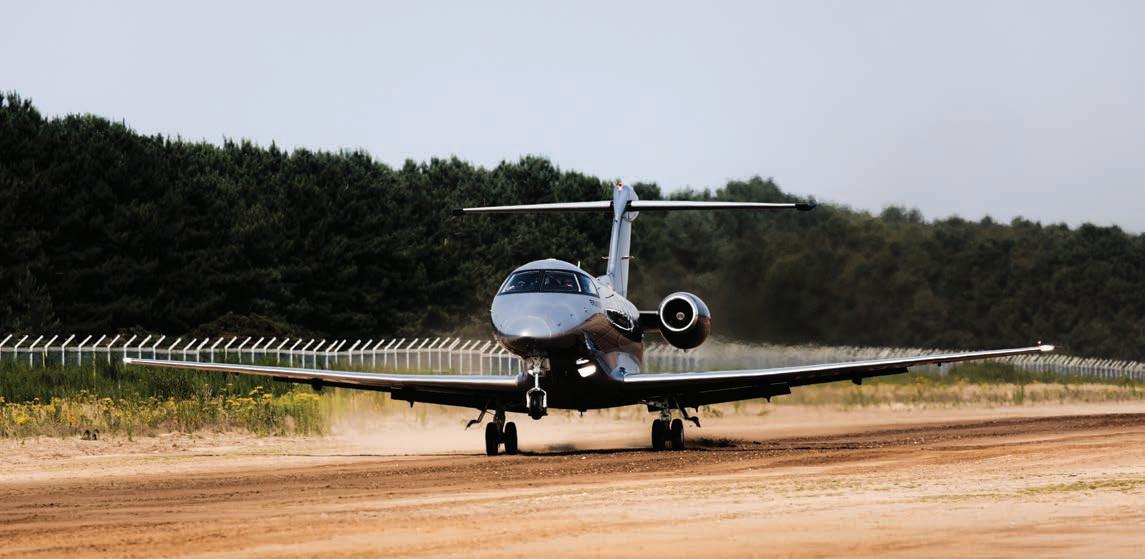
In Africa, perceptions of business aviation are changing slowly but surely. Gone are the days when business aviation was perceived as a means of transport only for extremely affluent people. Today it is considered an economic catalyst that enables countries to boost investment and spur development.
Without business aviation, investing in many parts of Africa would have been difficult, especially given the absence of efficient road and rail transport in the vast continent, industry leaders point out.
Business aviation is supporting economic growth in the mineral-rich continent by ferrying precious minerals such as gold and diamonds. In West and Central Africa, business jets play a pivotal role in serving the oil and gas industry by transporting staff and operating emergency and medevac flights. In East Africa, business aircraft support the booming tourism sector by transporting tourists to beaches, national parks, and safaris.
Medevac is also an important activity for business aircraft. With a lack of fullyequipped hospitals and specialized doctors throughout the continent, private aviation plays a role in filling the gap, operating medevac flights to countries with more developed health systems.
Business jet flights are operated between West Africa and Europe, North Africa to Europe, and East Africa to the Middle East, but the majority of flights are still operated in intra-African routes.
According to Danie Joubert, v-p of sales in Africa for international broker Jetcraft, many companies are adding business units across more countries in Africa, creating a need for air travel. Joubert stated that demand for business jet ownership is rising dramatically across the continent, as seen in countries such as Angola, Uganda, and Ghana.
“In Kenya, which already has a strong installed base of short-range private
aircraft used for tourism, we are seeing growing interest in larger jets for longer missions. Established markets such as Nigeria and South Africa remain vibrant.”
With 418 business jets, South Africa has the largest business aircraft fleet, followed by Kenya at 137 and Nigeria at 109.
“Rather than being the last post for many aging aircraft, the continent is now seen as a viable center for operations, where leading OEMs actively sell their newest models and international operating standards are the norm,” added Alcinda Pereira, chair of the African Business Aviation Association (AfBAA), the pan-African industry advocate with 40 members based in Africa, Europe, and the U.S.
Pereira, AfBAA’s first woman chair, said the association, which was established in 2012, has played a significant part in changing the perception of the industry and continues to strengthen its ties between its members and international
and regional institutions to foster the growth, understanding, and acceptance of business aviation.
“AfBAA’s aim is to promote business and general aviation as a positive tool for economic development in Africa that is valued and supported by African governments, civil aviation authorities, and aviation industry stakeholders throughout Africa,” she added.

In 2018, AfBAA widened its remit to include both business and general aviation in Africa. “This has significantly expanded and strengthened AfBAA’s footprint on the continent and has firmly positioned it as the official voice of business and general aviation in Africa,” Pereira said, adding, “We have grown in membership since Covid, and we see nothing but great things in aviation going forward.”
According to AfBAA, Africa’s aviation sector is steadily recovering from the impact of the Covid-19 pandemic. Air cargo has rebounded by 31.4 percent, and air travel is at 93 percent of 2019 levels. Pre-pandemic passenger traffic levels are expected to be achieved this year.
For a continent housing over 15 percent of the world’s population, Africa only accounts for 3 percent of global air traffic. However, the International Air Transport Association (IATA) predicts that seven of the top 10 fastest-growing aviation economies in the next 20 years will be in Africa.
AfBAA’s executives are optimistic that growth bodes well for business aviation as well and will draw key investors, particularly from Europe, necessary to build up the services side of the sector.
“Africa offers attractive investment opportunities for global business aviation players due to its expanding middle class, resource-rich economies, and untapped aviation market potential,” said Gavin Kiggen, vice chair of AfBAA. “There is a rising demand for charter services, maintenance centers, and aircraft sales in the region.”
According to Kiggen, African governments and regulators are beginning to understand that business aviation is a valuable business tool, which has resulted in streamlined investment in the continent.
“The understanding of the value of business aviation to Africa is tied to the need for corporations to travel to expand and have business success, whether locally or
internationally. This is why companies like the AfBAA members are constantly strengthening their footprint,” Kigge n said.
Dawit Lemma, founder and CEO of Ethiopia-based aviation services provider Krimson Aviation, said one of the most positive developments is acceptance from regulatory bodies on the continent. Regulators are now beginning to understand that business and general aviation and commercial aviation are not the same operations and require their own set of regulations, Lemma said. “A great example of this is the new General Aviation Safety Strategy that the South African Civil Aviation Authority embarked on,” he noted.
However, not everything is as rosy as it looks. Business aviation operators have been facing a myriad of challenges thwarting the growth of the sector.
Lack of awareness, political instability, armed conflicts, inadequate airport

infrastructure, a lengthy flight permit process, and exorbitant landing and ground handling fees are among the long list of challenges affecting business aviation operations in Africa.
Political instability within the continent is one of the major challenges that hamper the development of business aviation. Business aviation practitioners lament that the continent has many active conflict zones. In the last couple of years, largely in West Africa and Central Africa, many parts of African airspace have advisories on the flight levels that business aircraft can operate to due to active conflict zones.
Steep taxes and airport charges are another hurdle. According to IATA, Africa has some of the highest taxes and charges levied on aviation fuel and the highest landing fees/charges. These costs are passed on to the passenger, keeping airfares high and making air travel more expensive than elsewhere in the world.
In addition, there have been significant challenges with visa facilitation in African countries. However, in recent years, some countries have eased the visa process.
Jon Howell, founder and CEO of AviaDev Africa, said openness in Africa is improving as countries realize that high visa charges and time-consuming procedures are detrimental to leisure and business tourism. “Great strides have been made with the implementation of e-visas and visas on arrival. A good
example of this is the visa agreement between Kenya, Rwanda, and Uganda,” Howell said. African countries are also striving to address the challenges of poor airport infrastructure. “There have been some notable new airport investments over the past years in Africa, but there are still a lot of airports with poor facilities and more importantly airports that are operating near or above capacity,” Howell said. “The airport infrastructure needs to keep up with the pace of route development on the continent if the market is to achieve growth.”
Another barrier to the significant growth of business aviation in Africa is the lack of qualified pilots in the continent. Pereira said some aviation nonprofit organizations focus on supporting the professional development of pilots, air traffic controllers, and other aviation professionals through scholarships, mentorship programs, and training opportunities. “AfBAA is looking at aviation as a whole, to see the downfalls and developments within Africa. We want to see the industry grow in all aspects to benefit all industries.”
In most African countries, business aircraft maintenance is unavailable. “Maintenance for these aircraft types remains challenging, with either poor or nonexistent maintenance support being available outside of South Africa or Kenya,” Kiggen said.
Lemma also points to challenges surrounding aircraft financing, and flight operation requirements such as permits, fuel, and
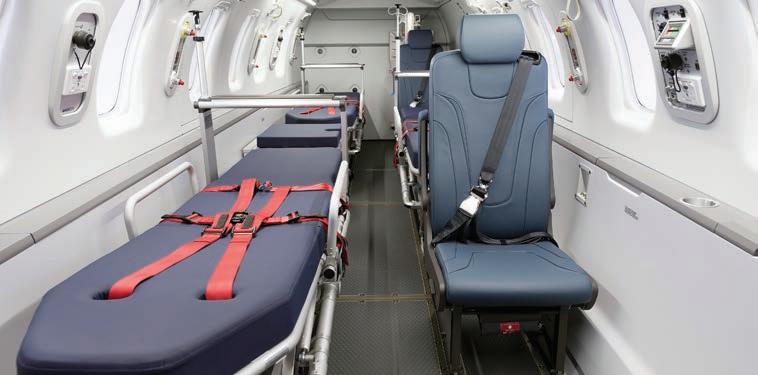

other facilities catering to business aviation. “The biggest challenge in obtaining permits, be that VIP or medevac, is the inconsistency in process and timelines in obtaining a permit across different states, even neighboring countries,” Lemma said. “Country A might only require aircraft documents and process the permit online within 24 hours. However, state B could be a neighboring state that requires aircraft, crew, and ownership documents and has to physically process at the CAA with a turnaround of more than 72 hours,” he added. This delay can take a heavy toll on life-critical missions.
Despite all the challenges, executives of AfBAA remain optimistic about the future of business aviation in the continent.
“While some lingering effects of Covid are still being felt by the business aviation industry in Africa, the consensus of the leading companies is that 2023 was a positive year, financially, and that private aviation’s recovery was faster than initially projected,” Kiggen said.
Further, he said, emerging economies such as Angola, Uganda, Ghana, and the Democratic Republic of Congo are all becoming vital players in the industry.
“While South Africa, Kenya, and Nigeria continue to lead the way in terms of aircraft sales and charter demand, more actors with increased capacity to supply services is good news for the end-user.”
With growth in the oil and gas industry, mining, and the burgeoning tourism sector, the future of business aviation in Africa seems promising.


A small, volunteer group of seaplane pilots, mechanics, and nurses are making a life-saving difference in one of the most impoverished places on the planet.
Life in Papua New Guinea (PNG) is short, brutal, and poor. It is one of the few places on the planet where polio and tuberculosis have made comebacks and cholera outbreaks still kill thousands.
Malaria afflicts 164 of every 1,000 people. Average life expectancy is just 65.
Population has quintupled since 1960. Most of the nation’s 10.5 million residents scratch out a living via subsistence fishing and farming; 88 percent remain rural and they speak more than 840 languages. Crops grown on riverbanks flood when water levels rise. Average per capita income is just $2,500. The infant mortality rate in some regions is as high as 40 percent. Most children who do survive leave school after the fourth grade. Tribal warfare is a regular fact of life. So is crime.
According to the U.S. State Department’s Country Security Report, “PNG’s crime rate is among the highest in world” and the country ranks 136 out of 140 in the Economist Intelligence Unit’s livability index, a score indicating that “most aspects of living are severely restricted.”
Boram Hospital is where the 25,000 residents of Wewak go for advanced care. So do the 350,000 residents of East Sepik Province who live in 120 villages along a 700-mile stretch of the Sepik River. While the area is served by 40-odd clinics, they are little more than dispensaries for rudimentary antibiotics capable of handling only minor illnesses and injuries. Most don’t even have X-ray machines. People in need of more advanced care must make the arduous, three-day river and land journey to Wewak. The mortality rate for those making the trip was not good, until Samaritan Aviation began operations in 2010.
Samaritan was founded by Californian Mark Palm, the son of a minister and the grandson of a seaplane pilot. Palm is very much a product of both: A&P mechanic, pilot, pastor, and graduate of both Bible and aviation technology college programs.
He remembers his first mission, at age 16, building houses in Mexico for people who were living in cardboard boxes. Three years later, in 1994, he arrived in PNG for the first time. Organizations such as Mission Aviation Fellowship had longserved villages there in the highlands with wheeled gear single-engine turboprops, conducting medevac missions and flying in food, medicine, and supplies. But for river basin dwellers, there was no such relief.
Palm immediately saw the need—and the opportunity. “We heard stories about people dying trying to get to hospitals— and there was water everywhere,” he
said. From that experience, the idea of Samaritan Aviation was born. After years of research, preparation, and fundraising, Palm returned in 2010 with his wife and three children—along with a used, disassembled Cessna 206 on amphibious floats, stuffed into a 40-foot ocean container.
Since then, Palm personally has flown more than 1,500 medical missions. Over the years, Samaritan’s fleet has grown to four aircraft. A small staff of dedicated volunteers collectively have flown more than 2,800 accident and incident-free missions, delivered more than 230,000 pounds of medical and other critical supplies, and saved thousand of lives.
Samaritan does all this on a shoestring budget of $2.68 million annually with administrative costs under 5 percent and a mere 1.6 percent spent on fundraising. Most of its budget comes from individual and foundation donations. Another 30 percent is contributed by grants from district, provincial, and national PNG government units that see the value of Samaritan’s service and would like to see it expanded.
Samaritan pays its pilots exactly nothing. Pilots must find their own sponsors. Even so, qualifying to fly for Samaritan is not easy. Flying skills are tested. Pilots undergo psychological evaluations. Spouses are
interviewed. Then a “vision trip” to PNG is required. “It’s really a calling,” said Palm. Flying the Sepik River is dangerous, even under the best of conditions. Samaritan flies only daylight hours, but it does other things to mitigate risks: good pilots flying well-equipped airplanes. Samaritan operates only used 206s—and it’s not just a matter of cost. “They’re lighter [than new production aircraft] and can carry more,” Palm explained, noting that useful load comes in at around 1,030 pounds.
Sama ritan’s latest “new” 206 is a 1980 model. Samaritan customized it with new paint, amphibious floats, a Continental IO550F engine for more boost, an all-composite 86-inch seaplane propeller, specialized cargo floor, Robertson STOL kit and wing extensions, a mod that allows the rear cargo doors to open when the flaps are down, V2track dualmode cellular/GPS tracking, texting, and voice, and modern Garmin avionics with autopilot.
The flight is in constant communication with the Boram triage nurse, and V2 allows it to be tracked in real-time by Samaritan. All-up, Samaritan invests about $650,000 in each 206 that it buys.

Medical equipment aboard is basic but functional: a stretcher, attendant chair, medical oxygen tank, and a drug bag with various intravenous solutions and injectables. Aircraft crew includes the pilot and the flight nurse. Patients are generally required to bring along a caregiver as well, usually a relative. Longest flights are approximately 140 nm or about 1 hour and 20 minutes, Palm said. The average flight is 45 minutes.
The 206s’ average fuel burn is 14.7 gallons per hour. The 100LL fuel the 206s require is not readily available in PNG, so Samaritan has it shipped in, eighty 50-gallon drums at a time for prices that range between $10 and $12 per gallon. Even at that price, running the piston enginepowered 206s makes more sense than converting to single-engine turboprops that burn more plentifully- available and cheaper jet-A fuel.
“Your up-front cost [per plane] would be at least three times as much and those planes burn 50 gallons per hour,” Palm noted. While turboprops could accommodate larger loads, he insists that “the 206 fits the job best for what we do and that’s why we are still bringing them over [to PNG].” He does admit that finding affordable used ones in good condition is becoming more challenging, and a transition to turboprops may be inevitable. “I think we might be forced to do it at some point.”
Samaritan’s mission does not end when the patient is delivered to the airport at Wewak. Samaritan has its own ambulance and staff for the last part of the journey to the hospital. After hospital admission, Samaritan follows up, bringing the patient clothing, food, and other necessities.
“We’re small, it has taken a long time, but we’re getting some traction right now,” Palm said of Samaritan’s program. “It’s exciting, being able to expand our capacity and serve a need that’s always been there. These people deserve a chance.” z

A law enacted in 2000 that was, until recently, never fully implemented is coming back to haunt U.S. air tour operators and could force many out of business. The law is imposing significant restrictions on air tours and could deny helicopters access to airspace that is supposed to be available to all users.
The National Park Air Tour Management Act of 2000 was signed into law on April 5, 2000, and codified into FAA regulations with the publication of Part 136 in 2007. The rules applies to any commercial air tour operation flying over a unit of the national park system, tribal lands (as defined in this regulation), and any area within a half mile outside the boundary of the national park. A specific requirement
of the act was that operators must apply to the FAA for authority to conduct tours in those areas, and the FAA and National Park Service (NPS) work together to establish air tour management plans (ATMPs) for those operations.
According to the FAA, “The objective of any air tour management plan is to develop acceptable and effective measures to mitigate or prevent the significant adverse impacts, if any, of commercial air tour operations upon the natural and cultural resources, visitor experiences, and tribal lands.”
In 2012, the act was amended by the 2012 FAA Modernization and Reform Act to permit voluntary agreements between
the FAA and air tour companies instead of ATMPs, plus it exempted national parks with 50 or fewer air tours per year.
The problem with the ATMP process, according to Vertical Aviation International (VAI), is that it is supposed to reflect input from all stakeholders. “Development of current plans excluded industry, raising significant concerns,” VAI explained. “The industry is critically concerned with the transparency of the ATMP drafting process, operational safety, economic impacts, and public access restrictions imposed by the ATMPs.”
While the act established the National Parks Overflight Advisory Group (NPOAG), that group and its tour operator members
weren’t invited to participate in the ATMP development process. According to VAI, “Excluding the NPOAG resulted in plans for the initial parks that contain clear safety concerns; the plans severely curtail the economic viability of air tour operators and the industry by limiting or completely eliminating flight allocations; [and] ATMPs are discriminatory against visitors who choose to experience the national parks by aerial sightseeing.”
After the 2000 act was passed, it turned out that the appetite for ATMPs waned and none were subsequently completed. But in 2019, two Hawaiian environmental groups sued the NPS and the FAA to force the agencies to implement ATMPs. “This put the FAA and NPS on an accelerated course to do so,” said Mark Schlaefli, owner and director of operations of Rushmore Helicopters in Keystone, South Dakota, and other affiliated operations.
In the case of Mount Rushmore and Badlands National Park, Schlaefli’s Rushmore Helicopters and Black Hills Aerial Adventures typically fly 9,000 times a year over both parks, but the ATMP reduced that to zero as of May 13. “It is quite a dramatic shift in the plan,” he told AIN. “The result is, in my view, the federal government has condemned my company…through what feels like an eminent domain situation, [they have] taken my ability to operate.”
Schlaefli welcomes the ATMP process, but in his case, he feels that it was misguided. He received no communication from the FAA, even though the FAA and NPS are supposed to work together. The required environmental assessment was “riddled with faults and lazy science that I believe can easily be challenged.”
One example of “lazy science” is that the models used for the assessment were based on data from 2003, “which is outdated,” he said. “The [NPS] has guidance that they are to use contemporary relevant data in their analysis, and it just did not happen.”
The tribal lands restriction of the Part 136 rules raises other issues. Schlaefli’s companies operate under a clearly spelled out fly neighborly program, published online, and it covers situations where, if a tribal event is being held in the park, the air tours will avoid that area. “We’re fine with that,” he said. In any case, he added, “We do not fly close to any tribal land.”
Schlaefli has filed for judicial review with the Eighth Circuit Court of Appeals, but if the court didn’t issue a stay, on May 13 the FAA was set to rescind the ops specs for both companies to fly in the two parks. His only option would be offering tours half a mile outside the park boundaries. Ultimately, it would benefit the parks and companies that fly air tours and the people affected by noise if the NPS and FAA had invited the operators to participate in the ATMP process, Schlaefli explained. “We are not anti-ATMP; I am 100 percent supportive of responsible operation in all areas.”
What he saw during the ATMP process was that safety experts at the FAA, including personnel at his local Flight Standards District Office, were not involved. “It was all from the office of the environment,” he said. One of the issues with the ATMP, not just where Schlaefli’s companies operate, is that the restrictions imposed will force air tour aircraft into much smaller slices of airspace. And the lack of FAA input from a safety perspective means added risk for operators and their customers.
Beyond how this affects Schlaefli’s and others’ air tour operations, he worries about the fundamental issue where a powerful government agency chips away at citizens’ rights. The control of airspace, which is supposed to be strictly under the FAA’s purview, falls under this debate. “It’s a slippery slope when you allow other agencies to dictate airspace,” he said.
Jake Harmon, chief pilot at Maverick Helicopters Hawaii in Kahului, is also facing ATMP restrictions, although they aren’t
as bad as those in South Dakota. Starting July 7, Maverick will be limited to 170 operations per year, down from the more than 2,900 it currently flies. “Everybody’s allocations for flying over national parks got completely gutted,” he said. Further, the tours are restricted to 11 a.m. to 2 p.m., perfect timing for when clouds tend to build, so, he added, “it’s impossible to do that tour.”
“We are lucky enough on Maui to be able to offer other tours,” he said. However, “It’s another blow for our industry. A lot of people want to enjoy the national parks in that way. It’s almost an affront to people’s rights to enjoy their national parks because they no longer can do so by air.”
Like Schlaefli, Harmon feels the operators and the public’s input was ignored during the ATMP process. “There were a great number of comments and none of those were taken into account in any changes to the ATMPs a s published.”
For the VAI and its operator members, the cuts in air tours generated by the ATMP process will have significant negative effects. The lack of business opportunities means that helicopter operators will move aircraft and their pilots, mechanics, and other support personnel to other markets, thus eliminating the benefits of providing support for local disasters and emergencies. Many operators do so voluntarily and without charge, and without the air tours to support them, these resources will not be available.
“When disasters happen, it’s the tour companies that have traditionally offered up their services for free,” Harmon explained. Maverick Helicopters was the first operator on the scene after the devastating Lahaina fire in August 2023, flying supplies, medicine, baby formula, and food to the burned city’s residents. “The only way we pay for the fleet to be here is by flying tours. If the tour industry goes away, so do the helicopters.” z
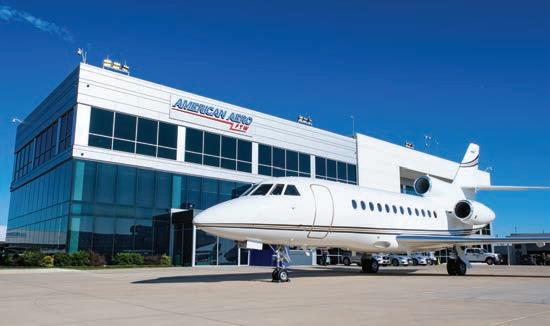
Growing FBO chain Modern Aviation made a blockbuster acquisition with the purchase of American Aero FTW, a highly-rated aircraft service provider at Dallas-area Fort Worth Meacham International Airport (KFTW). For Modern this represents its first FBO in Texas and brings its network to 17 locations in the U.S. and Puerto Rico.
The American Aero facility features an 8,600-sq-ft terminal with a wide array of technological features aimed at improving the comfort and efficiency of its customers. Among these features are self-tinting windows to dampen the glare from the harsh Texas sun, white noise speakers embedded in the walls of the lobby to improve privacy, a high-speed dishwasher, and a soundproof door on the pilot’s lounge to facilitate rest.
Occupying a 31-acre leasehold at KFTW adjacent to the U.S. Customs facility, the FBO also offers nearly 250,000 sq ft of hangar space.
Maven by Midfield, an FBO at Detroit-area Oakland County International Airport (KPTK), opened its newest hangar, a 28,500-sq-ft structure with its 28-foothigh bottom rolling doors. It also includes six offices totaling more than 1,200 sq ft of space for tenants.
The FBO is situated on a 7.5-acre apron area with direct access to the airport’s customs ramp and ample room for aircraft maneuvering, parking, and loading. Equipped with a non-foam fire-suppression system, it brings the facility up to more than 102,000 sq ft of hangar space. The company also recently completed a $400,000 renovation to its 26,500-sq-ft “Hangar 1,” which included an all-glass, hydraulicallyoperated door, new epoxy flooring, and updated heating.
San Diego Jet Center, a full-service provider at California’s Brown Field Municipal Airport (KSDM), has been purchased by Industrial Realty Group, the company that has a majority interest in Sacramento McClellan Airport (KMCC) and McClellan Jet Services, its lone FBO.
The facility at KSDM sits on a 25-acre leasehold and will be rebranded as Air Center San Diego. The current FBO features a small World War II-vintage terminal that will receive minor upgrades and operate as an interim facility until a new complex opens in the third quarter of 2025.
Ground has already been broken on the new FBO complex on the eastern side of the field, which will feature a 14,400-sq-ft terminal with a 1,200-sq-ft customs facility built to U.S. Customs and Border Protection specifications, pilot lounge, snooze rooms, conference rooms, kitchen, dining area, and porte cochère.
Sheltair has broken ground on a new FBO at Florida’s Sarasota Bradenton International Airport. When completed by the end of 2025, it will become the service provider’s 17th FBO location and its 13th in Florida.
The $40 million project will feature a 10,700-sq-ft terminal with an aircraft arrival canopy and landside porte cochere, open lobby area, a private lounge, pilot lounge, conference rooms, and tenant office space.
It will also include a pair of hangars capable of accommodating the latest ultra-long-range business jets, at 30,000 sq ft and 17,000 sq ft respectively, with another nearly 10,000 sq ft of office space. Plans for the site call for an additional four 20,000-sq-ft-plus hangars and a 60,000-sq-ft aircraft maintenance facility.
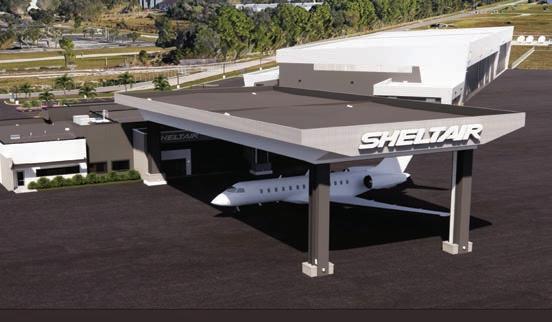
For its entire history of more than eight decades, Hampton Roads Executive Airport (KPVG) has been privately owned and has endured bankruptcy twice. That trend was reversed in 2000 when the original principals of Virginia Aviation Associates purchased its 230 acres and then the following year acquired an additional 400 acres, paving the way for expansion. “Being a privately-owned airport, we own everything vertically, so to speak,” explained majority owner Steve Fox, adding that KPVG is a public-use reliever airport for nearby Norfolk International. “We own all the land, all the buildings, and the FBO.”
Now a family business, the new ownership embarked on an aggressive development program, with Phase 1 consisting of many improvements to the airport, including the construction of a new 5,350-footlong, 100-foot-wide runway, which can handle aircraft up to a 737-based BBJ. It was built parallel to the former 4,000-footlong, 75-foot-wide main runway, which was simultaneously lengthened and repaved to become the full-length taxiway, and both feature new lighting. A new terminal was built along with a dozen hangars, and the airport was hooked up to the public sewer system. All told, it amounted to a $55 million project.
The 6,800-sq-ft terminal features a large lounge/passenger lobby, 20-seat conference room, pilot lounge with snooze room, kitchenette, ofce space, concierge, crew cars, and a porte cochère. The FBO also ofers mail service/package acceptance for its tenants.
Phase 2 of development includes a quintet of 12,000-sq-ft hangars, the last of which will be occupied this month. These bring the facility to more than 500,000 sq ft of aircraft shelter. It is home to 23 turbine-powered aircraft ranging from a Pilatus PC-12 to a Cessna Citation Sovereign.

The second phase of development at the Titan Aviation Fuels-branded FBO will also feature a second fuel farm with self-service access. When combined with the existing tanks, it will give the airport a capacity of 32,000 gallons of jet-A and the same amount of avgas, served by a pair of jet refuelers and a 100LL truck.
Another component of the $10 million project was a washrack, which according to Fox now permits the airport to host military helicopter squadrons during extensive training periods since those aircraft require frequent cleaning when operating in the ofshore marine environment.
The company expects to break ground next month on $10 million Phase 3, which will include a 36,000-sq-ft hangar complex, built to attract an AAM manufacturer as a flight test and research facility.
“We are preparing the airport to transition into the next 20 years of alternative fuels,” explained Fox, adding that it already has an electric airplane charging station. “We’re also looking at putting in a public electric charging station [as well as] a hydrogen production plant, so we would have not only avgas and jet fuel and electric, we’d also have hydrogen fuel here.”
With its staf of 13, the non-towered airport is open 24/7, but the FBO is only stafed from
6 a.m. until 7 p.m., with after-hours callouts available. Two of the unique staffers at the FBO are “chief petting officers” Buddy and Victoria, who accompany Steve and his wife Bee, as well as their son Luke—KPVG’s managing engineer/director of finance—to work and spend their time spreading good cheer to customers. “When people fly in on a stressful work trip, or have inclement weather or whatever, to be able to come in and relax and play with a pet and feel like they are at home, that is more or less our philosophy to running the FBO side,” the elder Fox told AIN
One of the airport’s recent highlights came when KPVG hosted a visit by President Biden. More than 200 armed secret service agents scoured the facility, and on the day of the visit, three V-22 Ospreys carrying the White House press corps accompanied the two helicopters, one of which was Marine One. “We had to be ready for that,” said Fox, adding that the FBO’s ventilation systems were tested ahead of time.
“All of the blinds had to be lowered in all of the offices and hangars, all of the hangar doors had to be lowered, and none of our tenants could be milling around. It was an interesting ordeal to go through, but it was quite nice to see that whoever the president happens to be is quite secure." C.E.
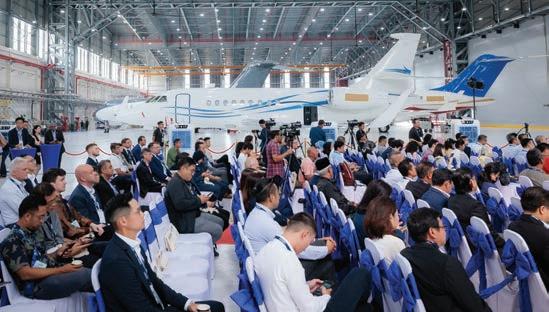
Wholly owned Dassault Aviation subsidiary ExecuJet MRO Services Malaysia held a grand opening ceremony on May 2 of its purpose-built MRO facility at Subang Airport.
Measuring 149,500 sq ft, the facility ranks as Malaysia’s largest business aviation MRO center. It covers more than twice the area of ExecuJet MRO Services Malaysia’s previous operation and serves business jet operators from across Asia.
ExecuJet MRO Services invests heavily in internationally certified training for its personnel, allowing it to perform line and heavy maintenance on Falcon, Bombardier, and Gulfstream aircraft registered with regional civil aviation authorities and with the FAA and EASA. The facility includes new training space at Subang.
Safran Helicopter Engines has signed a major support-by-thehour contract with DRF Luftrettung for the engines powering its H145 helicopter fleet, the engine maker said in late April. The support-by-the-hour (SBH) contract covers in-service support and MRO for more than 90 Arriel 2E engines. DRF Luftrettung ranks as one of the biggest users of the Arriel engine in Europe.
Safran Helicopter Engines Germany in Hamburg will manage the program. The facility monitors and supports 300 helicopter operators in Germany, Northern Europe, Eastern Europe, and Central Asia, for a total fleet of 2,000 engines.
Amsterdam Schiphol Airport-based JetSupport has partnered with business aircraft charter operator Jet View on a project
to offer rapid dispatch of mechanics, parts, and tools to all major business aviation airports within Europe “at a moment’s notice.” Called “JetSupport: On the Fly,” the service tackles challenges associated with technician positioning to AOG locations and the response time to new resource requirements during AOG rectification.
Fielding a team of certified technicians for all major OEMs, JetSupport said the project addresses industry challenges including limited commercial airline connections, the logistical complexities of parts availability in OEM warehouses scattered throughout Europe, and the costs, time, and effort associated with parts supply to AOG locations.
Pro Star Aviation broke ground last month for a new $12.4 million, 37,000-sq-ft hangar and office facility at the Grand Rapids Gerald R. Ford International Airport in Michigan. The project includes a multi-bay aircraft maintenance hangar with a support mezzanine as well as a 17,000-sqft steel-framed office structure. The hangar will serve as a dedicated Pilatus Aircraft sales and service center.
The two-story office facility features large clerestory windows to increase the amount of natural light flowing into the building. The space will offer modern amenities, including a pilot lounge and customer relaxation areas. Pro Star expects to move into the new facility in early 2025.
Headquartered at the Manchester-Boston Regional Airport in New Hampshire, Pro Star operates as an authorized factory service center for Dassault Falcon Jet, Embraer, and Pilatus Aircraft. Company services include avionics upgrades, business aviation connectivity, special mission aircraft modifications, aircraft maintenance, and sales.

The acquisition of the MRO business of Denver-based Mayo Aviation gives Stevens Aerospace a toehold in the Rocky Mountain region of the U.S., allowing further access for operators based in the western half of the country. The expansion won’t end there, according to Stevens president Christian Sasfai, who added that the company will concentrate on extending Mayo’s maintenance business beyond serving its own needs.
“Mayo never put an emphasis on what I’ll call retail business,” he said. “So we see quite [an] opportunity to grow the retail side.”
With the acquisition of Mayo’s MRO division at Denver Centennial Airport, Stevens now operates from four bases, including shops in Greenville, South Carolina; Nashville, Tennessee; and Atlanta.
One of Stevens’ first orders of business will involve hiring enough mechanics to increase its capacity from one shift to two. The company will need to quickly add at least another eight technicians to its current staf of 12, noted Sasfai. While the shortage of mechanics throughout the industry certainly has afected MRO providers in general, Sasfai projected a bit more optimism about Stevens’ ability to attract the necessary talent.
“[The mechanics’ shortage] was more difficult in the past couple of years, but it has eased up recently,” he noted. “And that’s another reason to be in a market like Denver. It’s a large enough metropolitan area that there are technicians in the vicinity and other employers that provide similar services.”
Sasfai further explained that, for Stevens, the volume of work has returned to what he called a normal pace after the frantic tempo the company experienced during the Covid pandemic. “We still see aircraft transactions because we do pre-purchase evaluations,” he said. “We still see people using their airplanes and getting inspections and such

done. So it’s very encouraging. And none of our customers have indicated that they’re seeing any drastic change in flying habits one way or the other in the near future.”
Apart from organic growth, Sasfai noted that opportunities to acquire existing MRO operations such as Mayo largely depend on their locations. “We like to find existing operations to which we can apply our business model,” he explained. “And the only real restriction is that it’s not so close to an existing location that we step on our own toes, because airplanes are mobile. If we were to get something within a couple hundred miles of an existing location, you really just cannibalize that location.”
A natural benefit of acquiring existing operations includes the fact that they typically come with tools and other infrastructure, explained Sasfai. For Stevens, that means less cost and more time to concentrate on preparing its information technology systems and the facility to start serving customers.
Already supporting a wide variety of aircraft models, from smaller airplanes such as King Airs to big jets such as Gulfstreams, Stevens envisions the workscope of the
Denver shop ranging from light turboprops to medium-sized business jets. “We think that with the number and type of airplanes that Mayo operates and that our sister company [Tenax Aerospace] operates, that’s going to take up a majority of the capacity, and then there are enough similar airplanes that we could service on a retail basis,” he explained. “So we prefer to focus on fewer airframes, but become experts on those…instead of trying to be all things to all people.”
Stevens’ acquisition of Mayo Aviation’s MRO business further tightens its alliance with the George J. Priester Aviation group. Last year, Stevens acquired the maintenance operations of Hill Private Aviation, Priester’s Southeast base. This latest alliance offers Priester customers more access to MRO capabilities for all aircraft types and gives Mayo customers more benefits such as preferential maintenance scheduling.
“This allows us to better focus on our aircraft owners and charter services while offering a national MRO partnership to our customers, giving them more options, capabilities, and expertise,” said Mayo Aviation president Brent Moldowan. G.P.
Raytheon B200, March 12, 2024, Billings, Montana
Neither pilot was injured when the gear collapsed during an emergency landing following a total loss of electrical power. The Part 91 positioning flight departed Billings shortly before 08:00 local time on a planned 17-minute trip to pick up passengers at Colstrip, Montana. The starting and departure sequences appeared normal, but shortly after takeoff a cascade of annunciator warnings alerted the pilots to “a total loss of electrical power.”
The safety pilot found no electrical failure checklist in the flight manual and instead began the checklist for manual gear extension. The flight returned to Billings and was cleared to land via light signals. The pilot entered the pattern on an extended base leg, pulled the landing gear circuit breaker, and “unstowed the emergency landing extension bar,” using it to pump the gear down “about 30 times.” Without electrical power, the gear position indicators were inoperative. The King Air touched down with flaps retracted; in the pilot’s words, “the main landing gear buckled, followed by the nose gear,” and both propellers struck the runway.
Investigators found the generator switches in the “ON” position but the battery master turned “OFF.” The pilot could not recall whether he’d tried resetting the generators but described the procedure incorrectly, referring to the engine start switches rather than the generator controls. Further testing found both generator caution lights on the annunciator panel inoperative. The battery initially produced
24 volts, which dropped rapidly under load testing. Tests with the airplane on jacks also showed that manual extension required 70-80 pumps of the emergency handle to extend and lock the landing gear.
Eurocopter AS350B3, April 2, 2024, Valais, Switzerland
Three occupants of the helicopter were killed and the other three evacuated with injuries after their heli-ski flight “skidded off ” its landing zone around the 12,000foot level of the north side of Petit Combin mountain. Initial reports indicated that the fatalities included the pilot, an American ski guide, and one passenger of undisclosed nationality.
Seven rescue aircraft responded to the scene. The survivors were reported to be three brothers from the UK, one of whom pushed the others out of the cabin as the helicopter skidded down the mountain.
Cessna 525B, March 7, 2022, Middle River, Maryland
The aircraft was substantially damaged after it departed the runway on landing at Martin State Airport and ran into the perimeter fence. Neither of the pilots aboard the Executive Flight Services Part 135 charter flight were injured.
Flying a positioning flight from Washington Dulles International Airport, the pilots reported that they were flying a stabilized approach to Runway 15 at Martin State.
Adding 5 knots to the Vref speed to account for gusting wind, the pilots said they determined that they would need about 3,000 feet of the 6,997-foot runway to land.
The aircraft landed within the touchdown zone, they reported, and said the rollout appeared normal until the pilot asked, “Why aren’t the brakes working?” The copilot applied brakes on his side but also was unsuccessful in achieving su fficient braking.
Then they attempted to locate the emergency brake, which is located under the instrument panel in front of the pilot’s legs, but were unable to find it. Instead, they used the parking brake. The airplane continued past the runway at about 58 knots, traveling 450 feet before impacting the perimeter fence.
ADS-B data and video footage from airport surveillance cameras indicate that the aircraft touched down about 2,000 feet beyond the approach end of the runway at about 110 knots.
An examination of the Citation CJ3's braking system failed to find an anomaly, but a performance study of the accident aircraft revealed that it had decelerated on the ground primarily by way of aerodynamic drag, free rolling with “unbraked” wheel friction for about 5,000 feet after touchdown. “There was virtually no evidence of deceleration due to hydraulic or pneumatic wheel braking during the rollout,” the NTSB said, concluding that the probable cause was an “undetermined failure of the brake system.”
Contributing to the accident, the Safety Board added, was the inability of the pilots to locate and operate the emergency brake control.
At the time of the accident, the pilot had 2,789 hours total time—248 hours in make and model, and 1,151 hours as
pilot-in-command (PIC). The copilot had 7,505 hours total, 115 in make and model, and 5,933 as a PIC. Visual conditions prevailed at the time of the accident with 10 miles visibility and wind speeds of 12 knots gusting to 21 knots. The 2009 model aircraft had 3,669 hours when it had the excursion, and its last inspection had been three months earlier.
Cessna 208B, April 13, 2022, Heyburn, Idaho
The operator of a potato processing plant beneath the final approach course to Runway 20 of the Burley (Idaho) Municipal Airport failed to complete the mitigation measures required after the FAA determined that the plant’s vent stacks posed a hazard to aerial navigation. The solo 30-year-old commercial pilot was killed when her Caravan struck an agglomerate stack whose top was just 98 feet below the 3.5-degree glidepath to the runway’s displaced threshold. The plant operator had fitted that stack and five of six other stacks grouped together with flashing red lights but had not painted them in alternating stripes of white and aviation orange, as directed.
The Part 135 freight flight originated in Salt Lake City. The accident occurred during the second RNAV approach to Runway 20. The first leveled off about 20 feet above the runway before the pilot initiated a missed approach, presumably after evaluating landing conditions in accordance with company policy and procedures.
On the second approach, the Caravan descended about 130 feet below the glidepath on short final, entering and emerging from clouds of steam from the other six stacks before striking the agglomerate stack. While the agglomerate stack was clearly visible from the ground throughout, an NTSB performance study found that for
most of the last 30 seconds before impact, it would have been obscured by the airplane’s instrument panel while the runway threshold remained visible.
Prevailing weather included winds from 210 degrees at 8 knots and one mile visibility below a 2,300-foot broken layer with a temperature of -3 C and a dew point of -5. Although temperatures were below freezing and visible moisture was present in the steam clouds emitted from the plant, investigators who arrived within hours found no structural icing on the airframe, and there was no evidence of any preimpact anomaly of airframe, instrumentation, or powerplant.
The 1,380-hour pilot had flown into Burley at least 13 times in the preceding year. She had logged 213.5 hours in the last 90 days and 85.9 in the past 30 days, and flown 193 hours in the Caravan.
Cessna 560, Jan. 27, 2023, Bufalo, New York
A nearly catastrophic departure from controlled flight was traced to maintenance personnel’s deviation from their usual reinstallation procedure of the engine cowling after performing maintenance. The twin-engine jet lost nearly 20,000 feet in less than six minutes after the left engine’s cowlings detached from the nacelle at 23,000 feet, striking the fuselage and horizontal stabilizer.
The drastic increase in parasite drag triggered an uncommanded left roll and yaw, causing the rapid descent. The pilots declared an emergency and eventually recovered control 3,200 feet above Lake Erie. Though airplane control remained difficult, they made a successful emergency landing at New York’s Buffalo Niagara International Airport. One passenger suffered serious injuries in the upset; the other two passengers and both pilots sustained minor injuries.
The charter flight from Toronto to Fort Lauderdale, Florida was made the day after a maintenance stop at the operator’s base to troubleshoot discrepant fuel flow indications from the left engine and an intermittent indication of low hydraulic pressure after landing. A daily inspection was also conducted. Interviews with the maintenance technicians found that a disruption of their usual sequence of tightening the cowling fasteners resulted in “the front inboard row of 6 consecutive fasteners” not having been secured.
Aircraft damage included a tear in the skin of the left side of the vertical stabilizer, dents to the left horizontal stabilizer and elevator, and multiple tears in the left horizontal stabilizer’s de-icing boot.
Bell 206 B3, July 1, 2023, Adolfström, Sweden
Oversized “gear plates” intended to prevent the helicopter’s skids from sinking into snow apparently caught the side rail of the “carriage” on which the helicopter was parked during an attempted lifto ff , causing a dynamic rollover that destroyed the main rotor system. The 42-year-old 252-hour commercial pilot escaped unharmed.
The flight was intended to pick up passengers six minutes away. Examination of the carriage found damage to the side rail from contact with the rear gear plates after the helicopter slid right while preparing to take off. The gear plates were found to have been fabricated by the operator without the required approval by the EASA or any other regulatory authority. z alerts
New and updated structure and nomenclature have been proposed to streamline access and readability of airport noise abatement entries in the FAA’s Chart Supplement (CS) notices. The agency said CS notices are intended “as the first and primary reference for pilots” to obtain operational airport noise abatement information. Proposed changes include: establishing a new noise entry in the CS Airport/ Facility Directory Section; consulting with pilot, operator, and airport stakeholders on preliminary best practices; publishing best practices for noise entry structure and nomenclature; and expanding the CS abbreviation list to include terms commonly used to describe noiserelated information. Comments on the proposal are due by June 17, 2024.
May 28, 2024 and May 28, 2027
Certain FAR Part 21 aircraft manufacturers, FAR Part 135 on-demand charter and commuter operators, and FAR Part 91 air tour operators will need to implement an FAR Part 5 SMS by May 28, 2027. Less restrictive provisions apply to most singlepilot or single-aircraft organizations and other smaller entities. Guidance materials, including ACs, to support the FAA’s new SMS rules, were scheduled to be available approximately 30 days after the rules went into effect on May 28, 2024.
E
ffective no later than June 20, 2024, air tour operators must comply with the final air tour management plan for Hawaii Volcanoes National Park. The plan will result in greatly reduced levels of air tour flights over the park and within a half-mile of its boundary. Specifically, the plan authorizes up to 1,548 air tours per year on three specific routes. This is a significant reduction from existing levels of more than 11,300 flights per year.
June 24, 2024
Guatemala: ADS-B
ADS-B operations are scheduled to be required for all helicopter and airplane
flights operating over the landmass of Guatemala starting June 24, 2024. This date is a one-year delay from the original deadline.
9,
Final compliance date is Sept. 9, 2024, for reporting historical records concerning training, alcohol testing, qualification, proficiency, and disciplinary action records that date before Jan. 1, 2015, to the FAA’s new pilot records database (PRD). Also beginning on Sept. 9, 2024, the Pilot Records Improvement Act (PRIA) ceases to be effective and will not be an available alternative to PRD. Also after this date, each entity that holds an operating certificate under Part 121, 125, or 135—or management specifications for Part 91K—must report to the PRD all historical records kept in accordance with PRIA dating from Aug. 1, 2010, until June 10, 2022. Since June 2023, certain operators under Part 91, 91K, and 135 were required to complete submissions to the PRD of all historical records dating on or after Jan. 1, 2015.
Oct. 24, 2024 and April 25, 2025
Certain air carrier airports certified under FAR Part 139 are required to submit an implementation plan for a safety management system (SMS) on the following deadlines: April 24, 2024, for airports designated
as hubs; Oct. 24, 2024, for airports with 100,000 or more annual operations over the previous three years; and April 25, 2025, for airports classified as port of entry, landing rights, user fee, and international facilities. The SMS must be implemented within 12 months of receiving FAA approval of the implementation plan.
Dec. 1, 2024
On or about Dec. 1, 2024, the FAA is scheduled to transition its notam format so it aligns with international standards. The agency said shifting to the new format will ensure U.S. notams are compliant with standards set by the International Civil Aviation Organization. According to the FAA, the new format will result in improved accuracy and accessibility of notam data for pilots, dispatchers, and other notam consumers; provide notam consumers with one consistent format for domestic and international operations; and allow for enhanced search, sorting, filtering, and archiving capabilities of notam data. An advisory circular will be published when the new format becomes effective.
Dec. 2, 2024
Starting on Dec. 2, 2022, EASA Part 145 maintenance organizations were required to meet revised regulations that were published in
November 2021. However, there is a two-year transition period, to Dec. 2, 2024, to allow maintenance organizations to correct any findings of noncompliance with the new Part 145 requirements. The main change introduced in the regulation is the required implementation of a SMS. To support the SMS processes, several organization requirements have been changed including the safety policy and internal occurrence reporting.
Scheduled to start on Feb. 16, 2025—a year delay—the U.S. Veterans Administration (VA) will have the authority to begin reimbursing non-contract ground and air ambulance transportation at rates “significantly below costs,” according to providers. Critics charge that the move will force providers to “downsize operations and reduce hours of availability while compromising the ability of veterans, particularly in rural areas, to receive prompt medical transport.” Under the new rules, the VA will be allowed to pay the “lesser of the actual charge or the amount determined by the Medicare Part B Ambulance Fee Schedule.” The VA currently pays for the actual costs of such medical transports.
Effective April 16, 2024, the FAA adopted fuel efficiency certification standards that implement new EPA-determined greenhouse levels that are required for subsonic jet airplanes with a mtow greater than 12,566 pounds and turboprop airplanes with a mtow greater than 19,000 pounds. An airplane is subject to these certification requirements: (1) at new (original) type certification; (2) upon manufacture of any covered airplane after Jan. 1, 2028; or (3) when a modification to a covered airplane meets change criteria specified in the regulations.
For the most current compliance status, see: ainonline.com/compliance

Airbus Americas CEO C. Jeffrey Knittel is retiring on June 3, at which time Robin Hayes will take on the role of CEO. Knittel has served as the company’s CEO since 2018. Hayes was previously CEO of JetBlue Airways and also held multiple senior executive roles at British Airways.

Arthur Guibert was named CEO of A ir Charter Service’s Swiss o ffi ce in Geneva. Guibert most recently served as head of business development for a private jet specialist in Switzerland.
Premier Private Jets has expanded its leadership team. Steve O’Neill , founder of CitationAir, has taken on a key advisory role at the air charter operator; Jeff Lee , formerly the company’s v-p of operations, was promoted to COO; and Joanne Aquilina, previously v-p of finance and CFO at Bethesda Hospital, was hired as CFO.

Jack Karapetyan is taking on a new role at Ontic as v-p and general manager of global MRO operations. Karapetyan previously was a general manager at Ontic’s site in Chatsworth, California. Global Jet Capital promoted Mike Christie to head of sales for the Americas, succeeding Steve Day . Christie most recently served as v-p of sales for the Western U.S. and Ohio for the business jet financier. In his new role, Christie will oversee the company’s sales activities in the U.S., Mexico, and Latin America. Day served with Global Jet Capital for eight years.
Collins Aerospace appointed Phill Godfrey chief sustainability officer, succeeding LeAnn Ridgeway, who retired. Godfrey has nearly 30 years of experience in the aerospace industry, including as director of sustainability strategy at Collins.
Bristow Ireland , a subsidiary of Bristow Group, has appointed Philip Bartlett as the director of Irish search and rescue. Bartlett recently served as the chief technical officer for Shannon Technical Services.
Penny Tomlinson is taking on the role of sales manager at the Av8 Group for Av8 AOG. Tomlinson’s previous experience includes working at Kalitta Air, USA Jet, Mesaba Airlines, Gulfstream, Falcon Jet, Flexjet, Aviall/Boeing, and Castle Aviation.

Bret Schipper was elected to Corporate Angel Network’s board of directors. Schipper is the chief of surgical oncology at Hartford Hospital and the Hospital of Central Connecticut and the director of oncologic surgery for the Hartford Healthcare Cancer Institute. He is also working on his private pilot certificate.
Richard Meikle was added to the board of directors at the Air Charter Safety Foundation (ACSF). Meikle is currently the leader of FlightSafety International’s safety program and has guided the courseware team in enhancing the inclusion of safety content to guarantee that comprehensive, current safety training is provided to pilots and crewmembers. The Air Charter Safety Foundation also added Shaan Bhanji to its board of governors. Bhanji founded the FlyEasy platform, which was acquired by Tuvoli, and serves as the Canadian Business Aviation Association’s chapter champion for the province of Ontario.
Western Aircraft recently added three employees to its MRO support team for turbine aircraft. Peter Chabay, previously an MRO quoter at the company, was promoted to turboprop customer service manager. Charlie Rust , who brings experience from Textron Aviation subsidiary Able Aerospace, joined Western Aircraft as its turboprop customer service manager. Jeff Soderberg also joined the company as a regional sales manager, primarily focusing on jet MRO sales. Soderberg’s previous roles include working at StandardAero, JSSI, and Pratt & Whitney Canada.

The National Air Transportation Association (NATA) promoted Alexandra Brendel to the position of associate v-p of member services
and engagement. Brendel has been a member of the Safety 1st and membership teams at NATA for six years and has fostered the efforts of the National Air Transportation Foundation.

C&L Aerospace hired Kristina Snow as its strategic inventory sales manager. Snow brings more than 10 years of experience in commercial and regional aviation, including positions at Worthington Aviation and Regional One.
Elliott Jets expanded its sales team by hiring Colby Creger as aircraft sales manager. Previously employed by XO Aviation and Jet Linx, Creger also has experience working as a regional sales director for Textron Aviation.
Aero Center Tallahassee promoted Robert Buchanan to general manager. Buchanan recently held other leadership positions at the Florida FBO, including customer service manager and operations manager.
Aviation Personnel International hired Christine Wetherell as candidate services manager. Wetherell previously served as the director of
administration for the jointly owned Wings Insurance and FlyWise Aviation, and her work experience also includes flying for Part 91, 121, and 135 operators.

U.S. Aircraft Insurance Group appointed two new officers to its New York office. Joy Posner takes on the role of v-p for general aviation claims, and Laurence Kovacs now holds the position of senior account executive v-p (underwriting). z
MAC Air Group founder Allyn Jay Caruso—known to many as AJ—passed away on March 7. Caruso became one of the youngest airline captains in the U.S. at the age of 19, when he began flying for Bar Harbor Airlines (BHA). He took on the role of president of BHA in 1981 and, along with his wife and son, developed the business into what is now MAC Air Group, an FBO/MRO and business aircraft charter, management, and sales firm. Caruso was typerated in five jet models and set more than 30 flight records.
NBAA senior v-p Joanne “Jo” Damato was presented with the Alpha Eta Rho award from the professional collegiate aviation fraternity of the same name. Damato has worked for NBAA since 2001 and oversees the association’s educational and professional development initiatives.
The Aviation Insurance Association (AIA) announced the induction of Cindy Hales into the Eagle Society Class of 2024. Hales, aviation practice leader and senior v-p of Hub International Northwest, will be recognized along with the seven other inductees at the 2024 AIA Annual Conference in New Orleans
Daher honored long-time pilot Margrit Waltz for completing her 960th ferry flight, an achievement notched in March when she completed a transatlantic trip to deliver a new-production TBM 960 turboprop single to an owner in North America. Daher recognized Waltz during the Aero Friedrichshafen show in April.
Completed in 15 hours and 38 minutes, the milestone
flight involved a trip from Daher’s TBM production facility in Tarbes, France, to the U.S. operations base for Daher’s aircraft division in Pompano Beach, Florida, with stopovers in Wick, UK; Keflavik, Iceland; and Canada’s Goose Bay.
“It was a great trip: good winds, good weather—and with the excellent performance of the TBM 960,” Waltz said of the trip. A German-born pilot who lives in Lackawanna County in Pennsylvania, Waltz has remained active in general aviation for 48 years. She became one of the first pilots to ferry a TBM across the Atlantic Ocean in 1991 and has since transported more than 300 of them worldwide.
“It’s highly symbolic that Margrit flew the milestone trip with a TBM 960, as her ferry flight services on behalf of Daher during the past three decades have contributed to the TBM program’s success,” said Nicolas Chabbert, the CEO of Daher’s aircraft division. “With her professionalism and aviator skills, she sets a wonderful example for all women aspiring to a career in aviation.”
continued from page 4
“While the FAA’s new rule appears appropriate in broad brushstrokes, the key going forward will be for the agency and industry to work in collaboration to ensure that rule’s real-world implementation is smooth, scalable, and squarely focused on measures that demonstrably enhance safety,” said NBAA president and CEO Ed Bolen. “We look forward to working with the agency as a partner on this shared goal.”
“As the NATA regulatory team combs through the 160-page rule, it appears the FAA has thoughtfully considered industry input in their drafting,” National Air Transportation Association v-p of regulatory affairs Alan Stephens told AIN. “In particular, we appreciate the extended timeline provided for industry to come into compliance and the accommodations for single-pilot operators. NATA will provide more information as we complete our analysis.”
More than 200 individuals and organizations submitted comments to the proposed rules published on Jan. 11, 2023. The new requirements include some of the changes suggested by those comments, notably extending the originally proposed compliance deadlines so that current Part 135, LOA air-tour, and Part 21 operators have up to three years to implement an SMS. The FAA is providing additional guidance in Advisory Circular AC 120-92 to help single-pilot organizations navigate the exceptions.
To emphasize the scalability of SMS to the new types of aviation organizations covered under the proposed rule, the NPRM for this rule included examples of how small aviation organizations, such as a single-pilot operator, could scale implementation of their SMS requirements to the size and complexity of their organization. For example, confidential hazard reporting is not required for certain singlepilot organizations. z

JAMES HOLAHAN (1921-2015), FOUNDING EDITOR, WILSON S. LEACH, FOUNDER & CHAIR EMERITUS
EDITOR-IN-CHIEF – Matt Thurber
MANAGING EDITOR – Charles Alcock
DIGITAL EDITOR – Chad Trautvetter
EDITOR AIN MONTHLY MAGAZINE – Kerry Lynch
SENIOR EDITORS – Curt Epstein, Gregory Polek – Show Editions, Hanneke Weitering – Technology Editor
COPY EDITOR – Jessica Reed
NEWS REPORTER – Sarah Rose
CONTRIBUTORS – Cathy Buyck – Europe, David Donald – U.K., Mark Huber – Rotorcraft, Jennifer Leach English, David Jack Kenny – Safety Gordon Gilbert, Jennifer Meszaros – Southeast Asia, Dale Smith, Richard Pedicini, James Wynbrandt
PRODUCTION MANAGER – Martha Jercinovich
GRAPHIC DESIGNER – Grzegorz Rzekos
DIRECTOR OF VIDEO – Ian Whelan
SENIOR DEVELOPER – Cameron MacPherson
FRONT END DEVELOPER – David Lohmeyer
EXECUTIVE CHAIR – Dave Leach
PRESIDENT – Ruben Kempeneer
HEAD OF PEOPLE & BRAND – Jennifer Leach English
SENIOR DIRECTOR, INDUSTRY AFFAIRS AND EVENTS – Nancy O’Brien
ADVERTISING SALES
SALES TEAM LEAD - Victoria Tod – Northeastern U.S./Eastern Canada/United Kingdom, +1 (203) 733-4184
Michelle James – Western U.S./Western Canada, +1 (520) 343-0236
Susan Joyce – Midwestern U.S., Southeastern U.S./Caribbean/Brazil, +1 (303) 641-5505
Diana Scogna – Europe/Middle East, +33 6 62 52 25 47
DIRECTOR OF MARKETING AND CLIENT SERVICES – Lisa Valladares
AUDIENCE DEVELOPMENT DIRECTOR – Eileen Silberfeld
MARKETING SPECIALIST – Alyssa Barry
SOCIAL MEDIA MARKETING – Zach O’Brien
SALES ADMINISTRATOR – Cindy Nesline
DIRECTOR OF FINANCE & HUMAN RESOURCES – Michele Hubert
MANAGER OF FINANCE & HUMAN RESOURCES – Tracy Britton
ACCOUNTS PAYABLE – Mary Avella
ACCOUNTS RECEIVABLE – Bobbie Bing
U.S. HEADQUARTERS
214 Franklin Ave., Midland Park, NJ 07432, +1 (201) 444-5075
Advertising Inquiries: +1 (201) 345-0085, adsales@ainonline.com
Circulation Inquiries: +1 (201) 345-0085, subscriptions@ainonline.com WASHINGTON, D.C. EDITORIAL OFFICE: Kerry Lynch: klynch@ainonline.com, Tel: +1 (703) 969-9195
EUROPEAN EDITORIAL OFFICE: Charles Alcock: calcock@ainonline.com, Tel: +44 7799 907595
Aviation International News (ISSN 0887-9877) is published twelve times per year (monthly). Periodicals postage paid at Midland Park, N.J., and additional mailing ofces. Postmaster: Send address changes to AIN Media Group, 214 Franklin Ave., Midland Park, NJ 07432. Allow at least eight weeks for processing. Include old address as well as new, and an address label from a recent issue if possible.
Subscription inquiries: +1 (201) 345-0085 or email: subscriptions@ainonline.com.
Aviation International News is a publication of AIN Media Group, 214 Franklin Ave., Midland Park, NJ 07432; Tel.: +1 (201) 444-5075.
Copyright © 2024 All rights reserved. Reproduction in whole or in part without permission of AIN Media Group is strictly prohibited. AIN Media Group publishes Aviation International News, AINalerts, AINonline, Business Jet Traveler, BJTwaypoints, ABACE Convention News, Dubai Airshow News, EBACE Convention News, Farnborough Airshow News, FutureFlight.aero, HAI Convention News, LABACE Convention News, MEBAA Convention News, NBAA Convention News, Paris Airshow News, Singapore Airshow News, Mobile Apps: Aviation International News; AINonline. PUBLICATION MAIL AGREEMENT NO. 40649046 RETURN UNDELIVERABLE CANADIAN ADDRESSES TO: PITNEY BOWES INTERNATIONAL MAIL, STATION A, P.O. BOX 54, WINDSOR, ON, N9A 6J5, returns il@imex.pb.com.
For feedback, letters to the editor, or other editorial needs, please contact AIN’s Editors at ainedit@ainonline.com
East : July 15-17, 2024, New York Area

“The AIN CALS event has been a refreshing experience for leaders within the corporate aviation community and the vendors that support their businesses. 100% engagement for 2.5 days. Truly a working event that leaves us all a bit tired but very enthused!”
– 2024 CALS West fight department atendee
“The AIN CALS event provides excellent opportunities for high level interaction between vendors and clients. The one-on-one time and small group sessions are very valuable settings.”
– 2024 CALS West sponsor




